Fireworks’ negative impacts confirmed
Despite their popularity the world over research published recently in the journal Pacific Conservation Biology has confirmed the shortterm noise and light disturbances from firework displays has a ‘highly damaging’ impact on wildlife, domestic pets, and the environment more broadly.
Lead author Bill Bateman, an Associate Professor at Western
Australia’s Curtin University’s School of Molecular and Life Sciences said popular fireworks should be replaced by cleaner drone and laser light shows which would provide a safer and more ecologically friendly alternative.
“Fireworks cause distress in domestic animals that may be managed before or after a fireworks event, but the impacts to wildlife can be on a much
A giraffe calf for Taronga
larger scale. The annual timing of some large-scale firework events coincides with the migratory or reproductive movements of wildlife and may therefore have adverse long-term population effects on them,” he said.
Researchers examined the ecological effects from fireworks at Diwali festivities in India, Fourth of July celebrations across To page 30
WSAVA Executive Board Director announced
Nalinika Obeyesekere, a veterinarian from Sri Lanka and WSAVA Award winner, has joined the Executive Board of theWorld Small Animal Veterinary Association(WSAVA).
Obeyesekere co-founded the first multi-veterinarian companion To page 30
In a record-breaking event, a healthy giraffe calf was born on January 23 at Taronga Western Plains Zoo.
“This little male is the fifth calf to be born here at the Zoo since June last year, and this is the first time we’ve had five calves so close together in age,” giraffe keeper Bobby-Jo Vial said,
After a smooth delivery, the calf was standing and suckling within an hour, and was named Shomari, which is a Swahili name meaning ‘forceful’.
“Shomari is thriving, meeting all his early milestones and settling into the herd,” Vial said. “As he grows in confidence over the coming To page 30
■ February 2023 ■ www.theveterinarian.com.au
ONTHEINSIDE NEWS Canine crisis looms CLINICALREVIEW Naomi Hansen MANAGEMENT 9 KIWI POST 10 ESSAY 12 ABSTRACTS 14 3
The
Veterinarian
5 21 ■ www.theveterinarian.com.au 16 NEWS End to rodeo roping 2022 THEYEARINREVIEW
Nalinika Obeyesekere
Through innovation, invention, and strategic partnerships with worldwide leaders in diagnostics, Heska provides the bene ts of latest generation technologies to veterinary professionals. From our ever-growing and wide range of in-house lab and imaging solutions, to outstanding service and support, discover all the ways Heska helps you provide a voice for your patients.
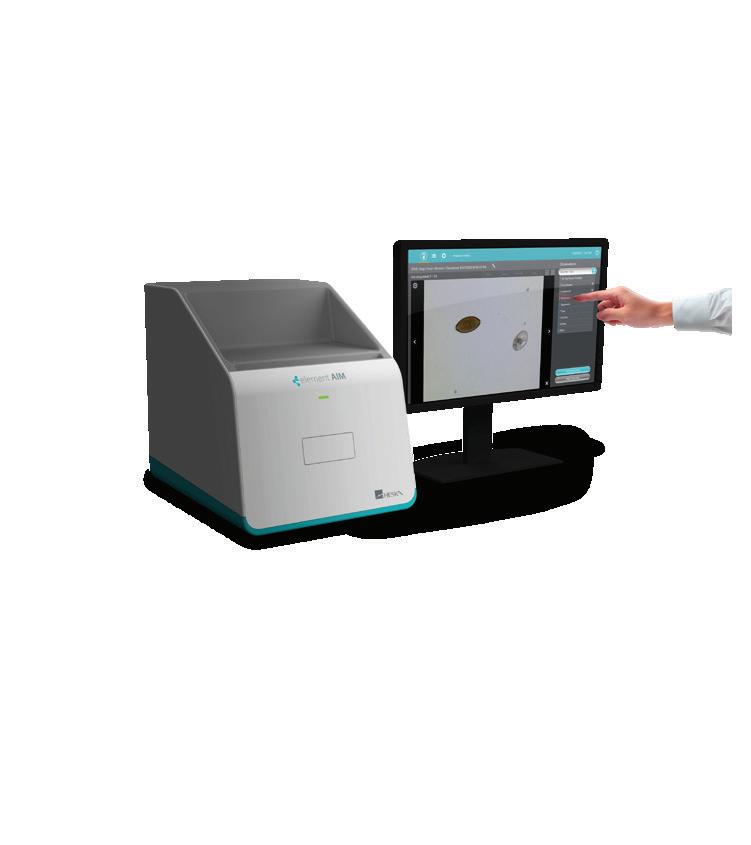
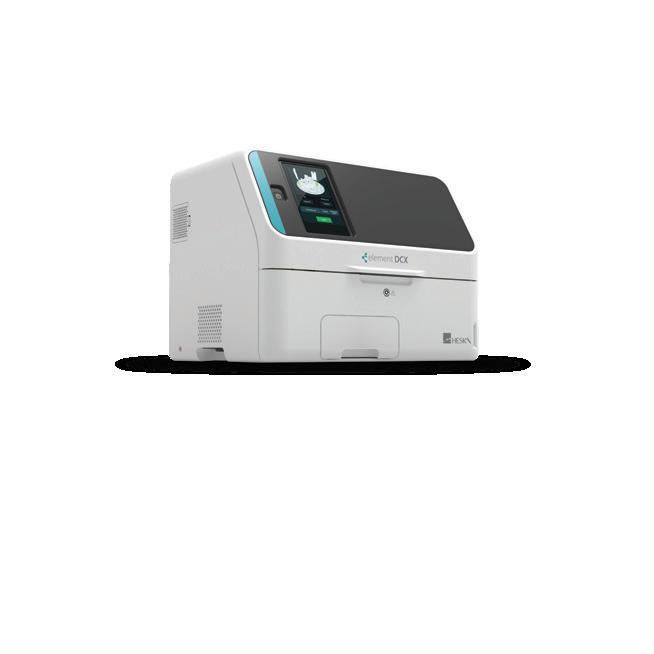
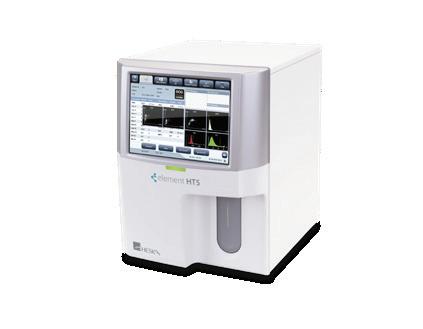
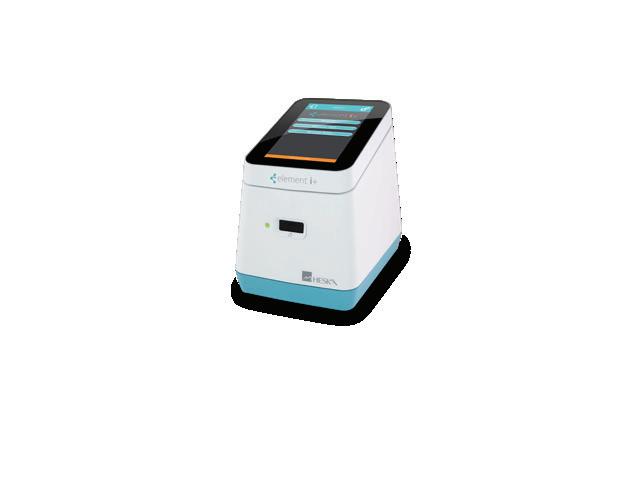
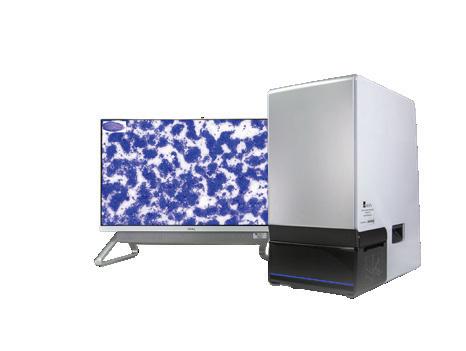


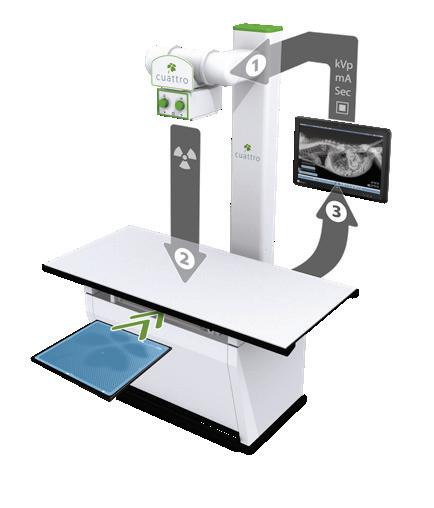


Internet BasedPACS HeskaView Cloud HDDigital Radiogr Cuattro DRHD SingleUse RapidTests trūRapid Telecytology Pathologists HeskaView Telecytology Scanner HeskaView ImmunodiagnosticAnalyser eterinaryHematologyAnalyse r Element HT5 Veterinary ChemistryAnalyser CX ArtificialIntelligenceMicroscopy Element AIM Your diagnosis, their voice. Find out what there is to discover. Call Heska today.
www.heska.com.au 1300 437 522 ©2022 Heska Corporation. All Rights Reserved. HESKA, Element AIM, Element i+, Element HT5 and Element DC5X are registered trademarks and Element DCX, Heskaview, Cuattro DRHD, Reset, and trūRapid are trademarks of Heska Corporation in the United States and other countries. AU22AD0902 DISCOVER HESKA
Vets’ wellbeing highlighted
Two studies published in 2022 highlighted the prevalence of occupational burnout in veterinary care providers, and the importance of seeking professional help to better manage the three common sources of stress that both studies identified. One of these involved mental health-related conditions associated with the heavy caseloads vets are increasingly expected to handle.
It was this link between high caseloads and a rise in mental health issues that prompted one Tasmanian vet to warn of the potentially serious consequences that could result should a proposal announced by the Veterinary Board ofTasmania towards the end of last year be adopted. The proposal seeks to amend the draft standard relating to the state’s after-hours animal care services, and states.
“Where there is no option for co-operative arrangements between practices, the veterinary practitioner is expected to exercise their judgement regarding the wellbeing for themselves and their employees and not put themselves or their employees at risk.”
Although the period for public comment ended before Christmas, and a final decision has yet to be announced, according to Launceston vet David Allen, approving the change risks shifting the burden
Canine crisis looms
of after-hours care onto those practices that continue to provide the service, and will also risk increased stress levels for vets dealing with already large caseloads.
“A lot of vets already are saying they don’t want to do after-hours. If the vets had a choice, they wouldn’t beon call. We get that the Board is saying people shouldn’t be on call for their mental health, but we don’tthink just saying ‘don’t be on call’ is the answer, because we’ll continue to be on call until it all comes crashing down,” he said.
The issue of mental health was a particular focus of the study published towards the end of last year in the journal Frontiers in Veterinary Science. It found that moderate levels of both the perceived stigma around mental health, and barriers to seeking help, featured in the responses of the 408 veterinary professionals who completed an online survey between June and December 2021.
With early career veterinary professionals identified as being among the more vulnerable, the study concluded that mental health needed to be, ‘more centrallyincorporated into the veterinary curriculum and professional development’.
The study also found that the emergence of COVID-19 had resulted in longer working days Topage 30
Veterinarians have warned of an emerging canine welfare crisis caused by rapidly increasing number of brachycephalic dogs. These dogs have exaggerated anatomical features that can affect their health and well-being. The most concerning of the issues they face is Brachycephalic Obstructive Airway Syndrome (BOAS).
The Hereditary Disease Committee (HDC) of theWorld Small Animal Veterinary Association(WSAVA) has produced an educational video highlighting the problems BOAS can cause in brachycephalic breeds, including French bulldogs, English bulldogs, and pugs. During the video experts explain how the appearance of short-nosed breeds has been affected by breeding for extreme and exaggerated anatomical conformation.
The WSAVA Hereditary Disease Committee has called on all stakeholders – breeders, owners, veterinarians, media, regulators, and others – to work together to improvethe welfare of these breeds.
It urges them toforeground health-focused breeding initiatives to produce dogs with less exaggerated anatomical features so that BOAS and other related health issues are not passed on.
The 17-minute video, available in several languages, features contributions from Jerold Bell, Chair of the WSAVA HDC, Cummings School of Veterinary Medicine, Tufts University, USA; Åke Hedhammar, WSAVA HDC member, Senior Professor in Internal Medicine at the University of Agricultural Sciences, Uppsala, Sweden; and Jane Ladlow, Clinical Lead of the BOAS Research Group, Cambridge University, UK.
“Wehope our video will help educate breeders, owners, and all of those involved To page 30
News TheVeterinarian 3 FEBRUARY 2023 www.theveterinarian.com.au
Jerold Bell
New Peer-Reviewed Studies that are Closing the Book on Laser Therapy Myths
Join us for a free lunch and learn until 14th April to learn about potential applications in non-musculoskeletal conditions from ears to rears.
Photobiomodulation (laser) therapy (PBMT) is best known for its ability to provide a non-invasive, drug-free pain management solution for orthopaedic conditions like arthritis. Recently published peer-reviewed studies have uncovered significant new benefits for many common conditions that may surprise you.
Your free lunch and learn will cover
• Recent studies that show how PBMT significantly reduces gingivitis and pain in post-routine dental cleanings and dental extractions
• Groundbreaking research on treating idiopathic large bowel diarrhoea with PBMT
• How PBMT can provide instant ROI by treating a long list of non-orthopaedic and everyday conditions, including post-surgical incisions, anal gland sacculitis, hot spots, otitis, and more
• New evidence to show that adding PBMT to rehabilitation therapy can slow the progression and extend the survival time for dogs with Degenerative Myelopathy (DM)
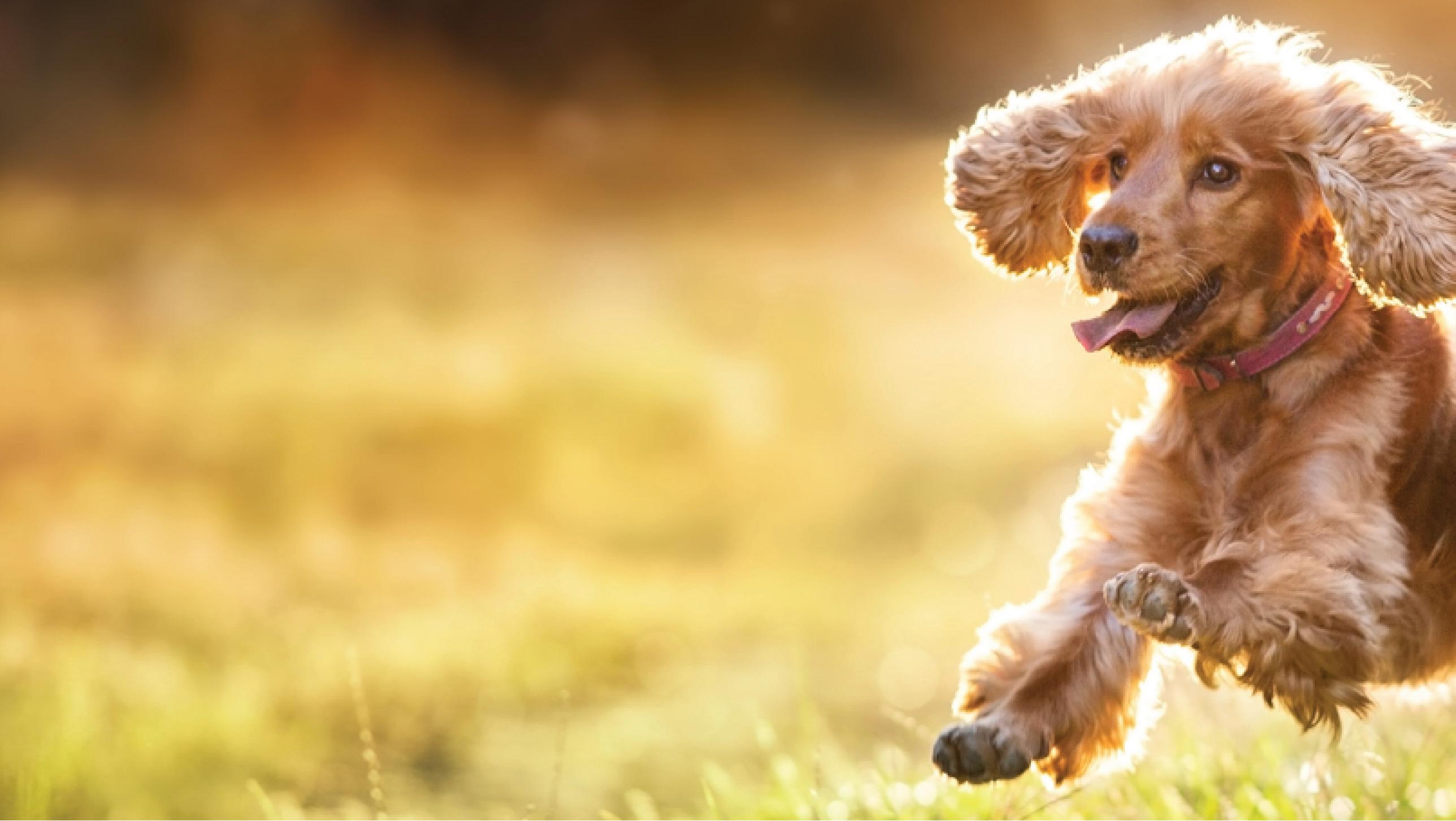
[Free Lunch & Learn]
Australia Only. Lunch and learn limited to 1 per clinic. Decision maker must be present. Lunch and learn value $100. Offer expires 14th April 2023. Companion Animal Health is a registered trademark of LiteCure, LLC in the United States and/or other countries. Enovis Animal Health.
your Lunch and Learn
or visit: info.companionanimalhealth.com/two-studies-aus CompanionAnimalHealth.com | 1300 66 77 30 | info@companiontherapy.com Creating Better Together™
Schedule
Scan the code
RSPCA calls for end to rodeo roping
Astudy published recently in the journal Animals has concluded that the rodeo event known as calf roping is cruel, terrifying, and stressful for the animals involved, and should no longer be considered an acceptable competitive sporting event or form of entertainment.
Co-author and RSPCA Australia senior scientific officer Di Evans, said the study provided further evidence that the practice of calf roping was arguably rodeos’ worst animal welfare issue.
“We know that calf roping causes unnecessaryand unjustifiable suffering to the animals involved. It includes injury risks such as damage to the windpipe from the lasso, bruising and broken ribs from being violently yanked off their feet and being forced to the ground, and choking from the tightened rope around their neck and being dragged along the ground,” she said.
Believed to have evolved as a competitive sport, when the horses previously used on USA ranches to capture calves for procedures like castration or dehorning were replaced by motor vehicles, the practice is now increasingly regarded as cruel.
Described by veterinarian and a former president of RSPCA Victoria Hugh Wirth, as ‘horizontal hanging’, and by ethicist Bernard Rollin as ‘problematic animal use’, Evans said the video footage used in the study clearly showed roping was distressing and frightening for the calves.
“They’re confronted with strange sights, loud noises, are separated from other calves, and literally then run for their life as they’re chased by a rider on a horse. An animal’s behavioural and emotional state is a crucial part of good animal welfare, so it’s vital to consider this as well as their physical state,” she said.
With some rodeo calf roping competitions
using individual calves up to three times in a day, and with few standards limiting the use of animals used in rodeo schools within defined periods of time in most jurisdictions, the study concluded greater protection under animal welfare legislation was necessary for rodeo calves.
“The study gives further proof that calf roping cannot be justified in 21st century Australia, and subjecting animals to such cruelty is completely out of step with community expectations. It’s no wonder 67 per cent of Australians are concerned about the welfare of animals in rodeos, according to research conducted in 2022,” Evans said.
The RSPCA is calling on all state and territory governments to put astop to calf roping, and urges businesses to also take a stand by refusing to support rodeos, especially those that include calf roping events.
Although the practice is legal in Queensland, NSW,NT, Tasmania and WA, calf roping is effectively banned in SA and Victoria because of a minimum body weight of 200kg for cattle. Rodeo events arebanned in the ACT.
‘Behaviours expressed by rodeo calves during different phases of roping’ is available at doi.org/10.3390/ani13030343.
■ ANNE LAYTON-BENNETT
News TheVeterinarian 5 FEBRUARY 2023 www.theveterinarian.com.au
Picture C Goodwin
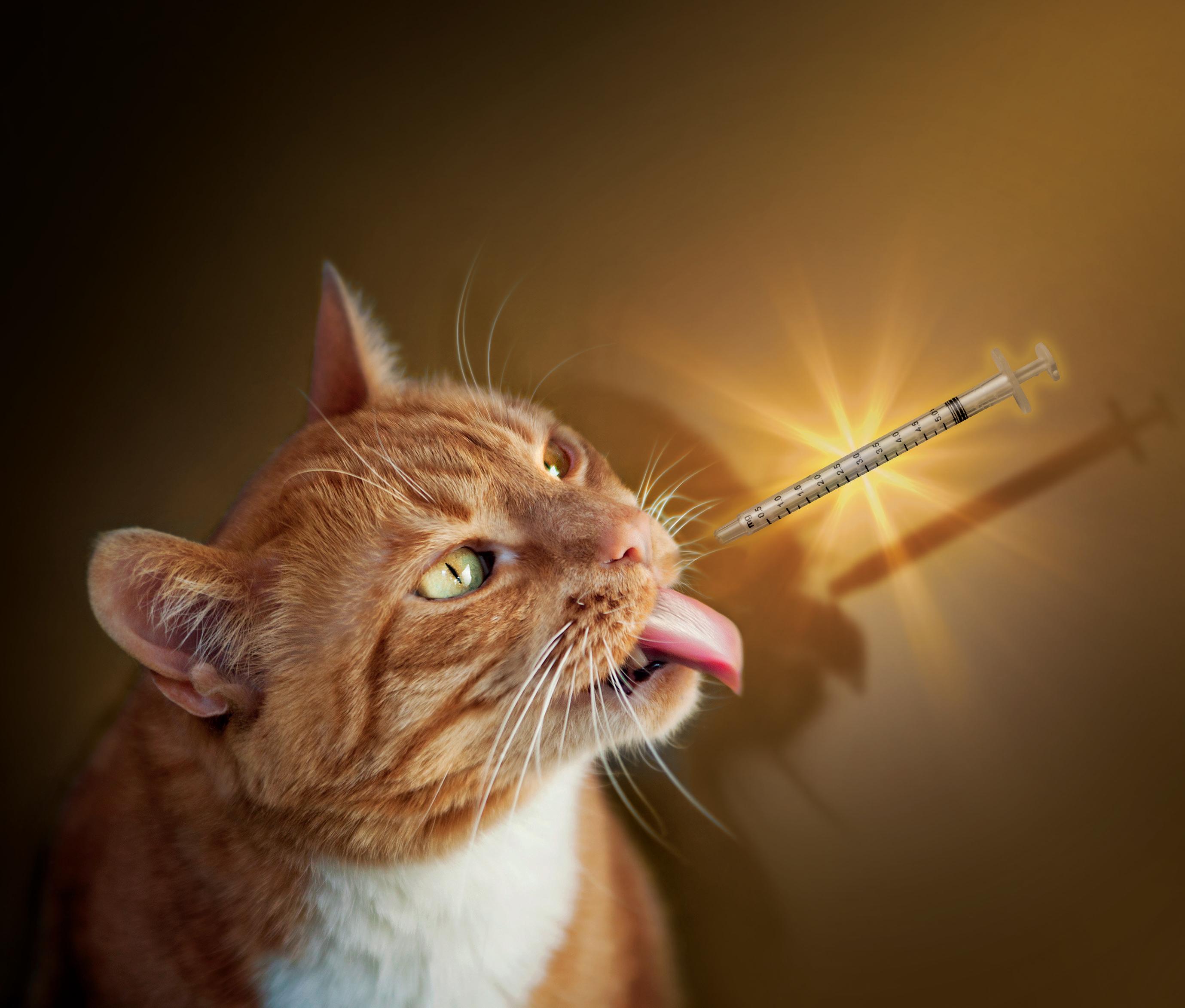

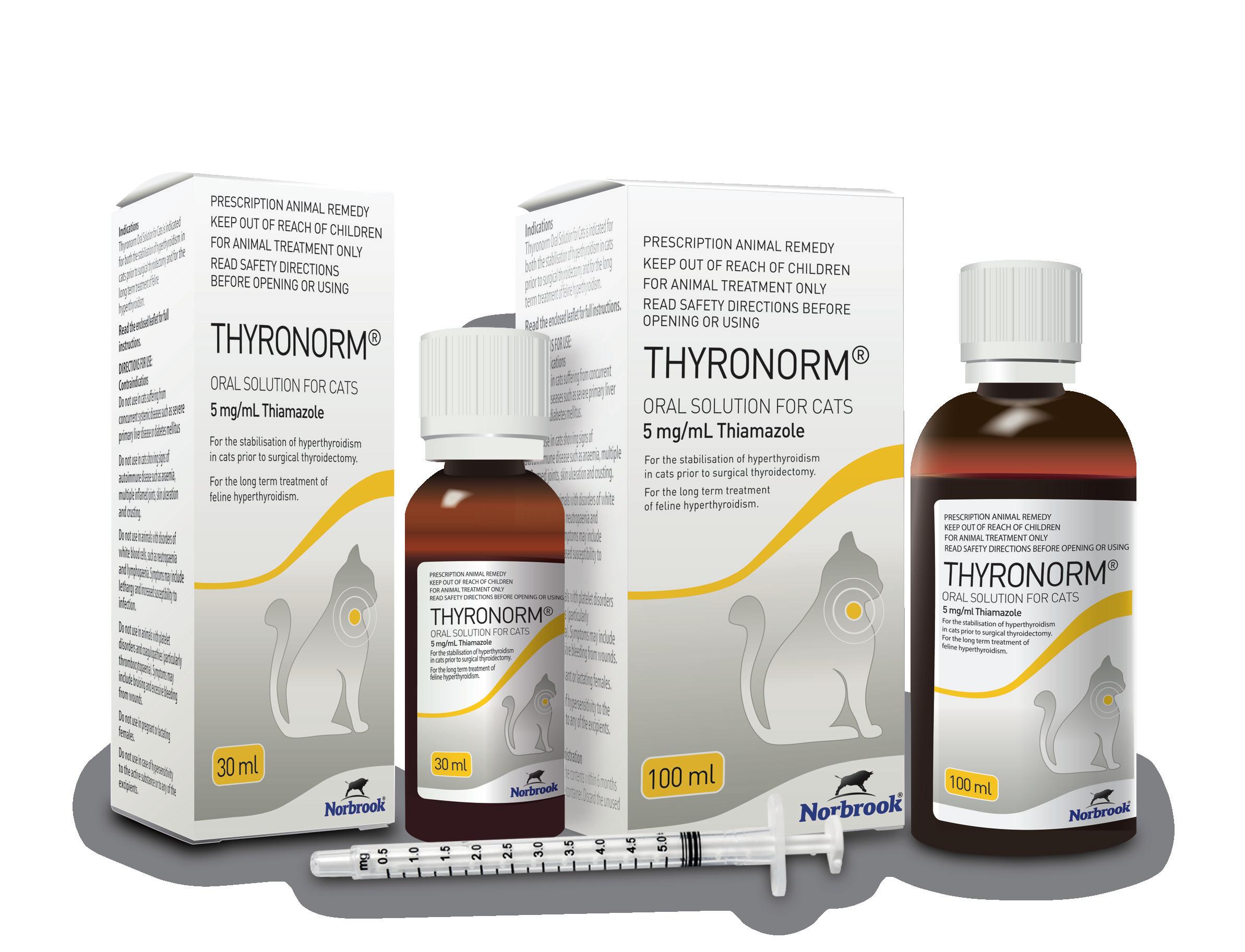
Sarah Howard graduated as a veterinarian from the University of Sydney in 2012. She worked for five years in a combination of mixed and small animal practices, before joining the team at PAW by Blackmores as aTechnical Services Veterinarian. She now works as Head Vet for PAW, and works on product development, education, and the technical advisory services. Howard has two young children, a horse called Flora and avery human-like Whippet called Winnie. She is passionate about natural health and studies Naturopathy in her (very sparse!) spare time. Howard lives in the Southern Highlands of NSW.

Caring for the carers
As is the nature of many healthcare professions, it is often the carer of the ill that suffers the most. Whether driven by competition, stoicism, an unwillingness to show weakness, never asking for help and putting your patients above all else, this trait amongst veterinary professionals can lead to stress, anxiety and ultimately burnout. According to the recently published Veterinarian Employment Survey, the main factors driving burnout in veterinary professionals is a combination of long working hours, inadequate remuneration and gruelling work conditions1
What is burnout? Christina Maslach’s definition of burnout involves three main aspects2

1. Deep exhaustion - the type that two days off just does not alleviate
2. Depersonalisation, hostility, and cynicism - loss of the sense of purpose that drove you to your career in the first place
3.Loss of self-efficacy and agency“What is the point? Nothing I do makes a difference anyway.”
Before one reaches a state of burnout, their state of wellbeing becomes suboptimal, whether that is physically, mentally, or socially. Wellbeing is in a constant state of flux and exists as a spectrum. This wellbeing continuum is what is continuously moving us between surviving, coping, flourishing, and thriving, and then back towards languishing, through to burnout and possibly dipping further towards chronic depression. For vets, workplace burnout was compounded as a result of the pandemic - but independent of this, long working hours, dealing with death, empathy overload, compassion fatigue and complaints have challenged our capacity to recover from burnout. It seems to many that reaching a state of survival is all they are able to obtain. But we can do better.
How do we maintain a more positive state of wellbeing in the face of the challenges veterinary work offers us? Let’sexplore some of the work of the father of positive psychology, Dr Martin Seligman. Martin has developed a model called PERMATM which describes what well people are doing to keep them feeling and doing well- flourishing in fact3
PERMA stands for:
P-Positive emotion - to feel more pleasure and happiness and know how to build and savour it
E-Engagement - in the things that bring joy, and bringing more of these things to their life, more often
R-Relationships - with people and animals, and being present and invested in these relationships
M-Meaning and purpose - which is often easy to lose sight of as a practitioner or nurse on the front line in a busy veterinarypractice
A- Accomplishments - a sense of setting your mind to achieving something and then achieving it.
Similarly,Sharee Johnson, registered psychologist and author of The Thriving Doctor describes a flourishing health care practitioner as one who is “upbeat, enjoys their work, feels like they’ve got the work life balance sorted most of the time, is committed to partnering and collaborating with others, values their relationships, is emotionally in tune and has a can-do mindset most of the time. They’re able to manage their own internal responses to their work as well as the external environment, including the complexities of healthcare electively.These practitioners are empowered and fulfilled, and they can feel their own agency in their life”4
Expanding on the notion of feeling one’s own agency, it is a way one can start to develop the internal resources to be able to take conscious care of themselves. When a person takes back the power in their life, they are then able to ask questions such as “What do I need? What help do I need so that I can be true to my own values or help myself find more wellness?” If you can begin to take care of yourself, it is then you can truly take care of clients and their pets.
In the veterinaryindustry,this is so hard to do. It is an industry built on serving others ahead of ourselves. A system driven by striving, hard work and self-sacrifice. So not only do veterinary workers need to find their own agency, but they need to build their skills in asking for help and collaborating with others. It is only then that a real change can be made.
References
1. Professionals Australia. Veterinarian Employment Survey Report. (2022). https://apesma.informz.net/ apesma/data/images/PA%20Vets%2 0Employment%20Survey%202022_ compressed%20(1).pdf

2. Maslach, C. & Leiter, M.P. (2021). How to measure burnout accurately and ethically. Harvard Business Review.
3. Seligman, M. (2011). Flourish: A Visionar y New Understanding of Happiness and Well-being.Atria Publishing.
4. Johnson, S. (2021). The Thriving Doctor.Hambone Publishing.
TheVeterinarian 7 FEBRUARY 2023 ■ www.theveterinarian.com.au Mental Health
VETS1LASER Therapy Laser
non-invasive medical technology
Why VETS1LASER?
Our VETS1LASER is the most affordable Class 4 laser available now. You get everything for <$19,000 + GST.
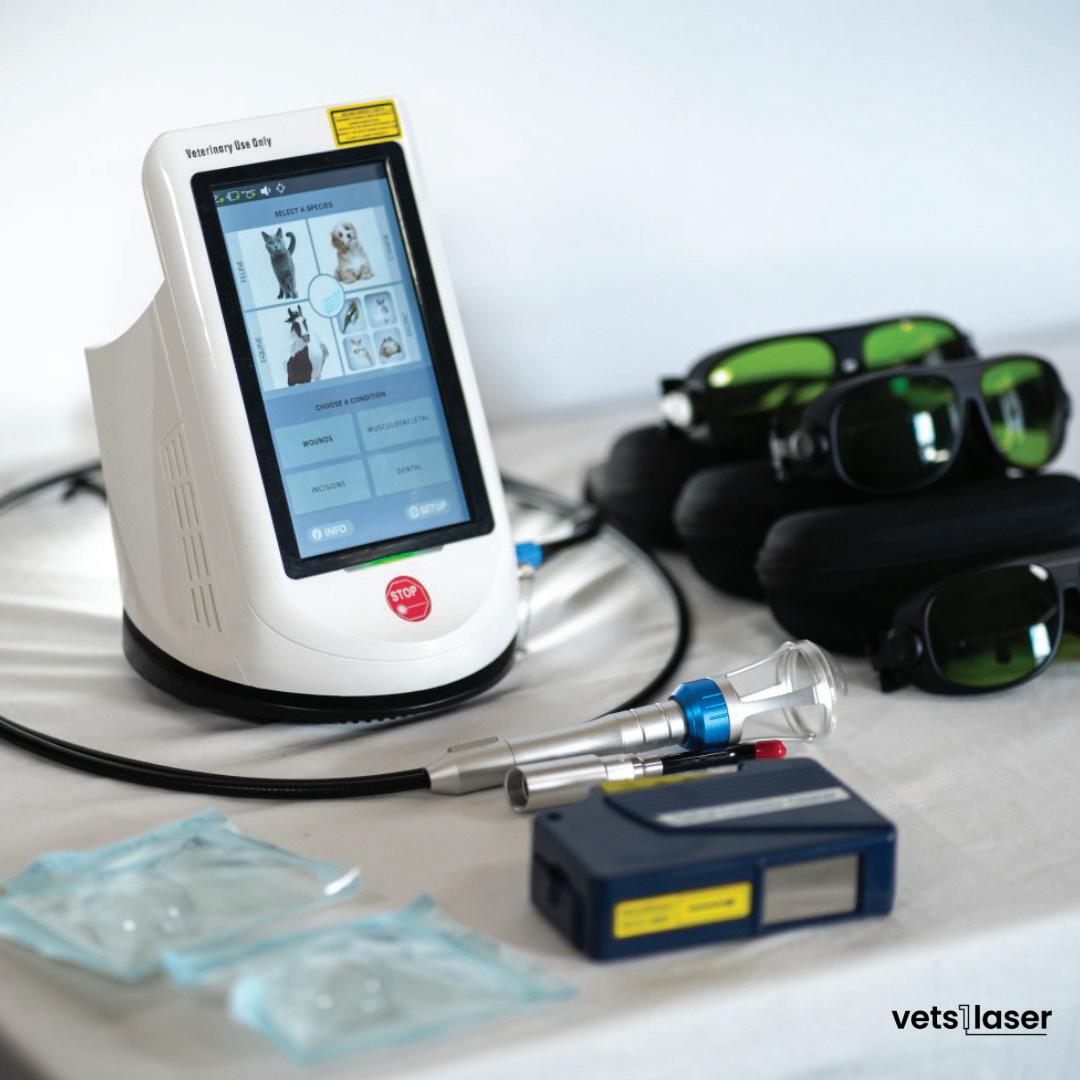
The simple VETS1LASER pricing:
At VETS1LASER, we understand that finding affordable laser therapy options can be difficult. That's why we're proud to offer our VETS1LASER at such an accessible price point.
For just $18,900 + GST, you'll receive a standard laser therapy handpiece with disposable surgery fibres, ENT therapy handpiece, safety goggles, carry case, and warning sign-everything you need to get started. Plus, our laser is one of the most affordable Class 4 lasers on the market today.
Don't spend hours scouring the internet for a great deal--call us now or visit our website to learn more.
02 8213 2581 vets1laser.com/contact
Simon Palmer is the Managing Director of Practice Sale Search, Australia’s largest vet practice brokerage. If you’d like more information on practice sales or want tohave a confidential discussion about your practice’s circumstances, email Simon Palmer at info@practicesalesearch. com.au or call 1300 282 042.
Vet Premises Council Zoning FAQs
There are a lot of misconceptions out there among vets who are buying practices, about the council zoning required for a vet practice. Can you put a surgery in a retail shop and start practicing? Can a vet practice operate in an area that is zoned for commercial use, or does it need special purpose zoning? What happens if your practice is operating under the wrong permit?
Toprovide some clarity in this regard, we thought we would answer some vet practice zoning FAQs.
What is council zoning?
Councils divide land into different areas, or “zones.” The zoning of apiece of land determines how you can use it. An area zoned “residential” might only allow houses to be built on the land, while an area zoned “commercial” might allow retail stores and other businesses to be built there. Permitted uses for these zones can be found online, in each council’s planning scheme.
Can a vet practice operate in any area that is zoned “commercial”?
Generally speaking, the answer is no. To operate a vet practice, you need two approvals - the first being apermitted use approval, and the second being an approval for the build or fitout.
If the premises is in a retail or office building, you may also need the permission of the body corporate. There are many buildings that do not allow vet services to operate within the building, even though the zoning may permit it.
How can the incorrect council zoning usage influence my practice sale?
Alarge part of a practice’s goodwill is often tied to its ability to trade in its current location into the future. Abuyer’s lawyer is there to mitigate
‘The zoning of apiece of land determines how you can use it. An area zoned “residential” might only allow houses to be built on the land, while an area zoned “commercial” might allow retail stores and other businesses to be built there’.
the buyer’s risk. As part of this risk mitigation, a buyer’s lawyer should check the council zoning to ensure that the practice can continue to trade as it has into the future. If it is discovered that the practice is
operating in a way that is in contravention to the zoning permit, the lawyer will often advise their client to either adjust the terms (reduce the price) of the deal, or not to proceed with the purchase until the zoning is fixed.
Examples of sales where we have seen this happen include:
■ A practice operating in a residential conversion building that has approval for commercial use, but not a vet practice.
■ Apractice for sale on a premises that has zoning approval for a vet practice, however, it also prohibits Saturday trading…and 20% of the practice’s billings were being done on a Saturday.
What happens if my practice is operating in a way that isn’t allowed for within the original approval?
Often, this can occur innocently enough, simply by the organic growth of a practice over time. In our experience, this can often befixed in a few months by an application to the council. You may need advice from a town planner. This is another reason why you may want to exit plan well in advance of when you wish to sell your practice.
Oral feline hyperthyroidism treatment launched
Tal Eloss, founder and director of 1Group Property Advisory.Tal and 1Group Property Advisory have extensive experience assisting and representing practices with their property and practice premises-related acquisitions.
How can I work out what current zoning/usage approvals have been granted on my premises?
You can:
■ Call your local council and ask if there are any approvals on record for the establishment of the practice
■ Ask the landlord/property or business vendor for copies of the approvals
■ Explore the DA Search component of your local government website
What are existing use rights?
Sometimes, a vet practice will predate the zoning ordinances of the council. When this happens, the practice will usually have an exemption from any newer zoning restrictions or compliance requirements.
If the zoning allows for a vet practice, can I operate the practice however I want?
Council zoning approval doesn’t just dictate the type of business that can be established on the site. It can also dictate other parts of the usage. For example:
■ The hours of operation (it can say no trading in late evenings or weekends, for example)
■ There are some zoning permits that dictate that a % of the premises has to be used for residential purposes.
Australian veterinary pharmaceutical manufacturer Norbrook has announced the launch of Thyronormoral liquid, a product which aims to manage hyperthyroidism in cats. Hyperthyroidism is the most prevalent endocrine disease in cats aged more than 10 years.
“Cats with hyperthyroidism aredifficult to treat because of the behavioural changes that occur with the disorder,” Michael Dhar, Norbrook’s Technical Services Manager, said. “Thyronorm oral liquid provides Australian vets with a registered alternative to making their clients tablet a cat.”
The oral liquid product contains 5mg/mL thiamazole (also known as methimazole) which inhibits the production of thyroid hormone, in a palatable liquid formulation that has an ISFM (icatcare.org)
‘easy to give’ award.
“Thyronormhas been available in the UK since 2016,” Dhar said. “When 200 vets were surveyed 99 per cent of them were likely to recommend its use. With this endorsement we are sure that Australian vets and their clients will love this product too.”
“This product was driven by vets voicing their frustrations at current therapy options. We are really proud as a company to have developed and delivered Thyronorm.”
Management TheVeterinarian 9 FEBRUARY 2023 www.theveterinarian.com.au
Kiwi Post
In praise of rurality
What’sit about when you pop to the shops for 2 minutes to grab something like a critical ingredient for dinner, and you have to allow 30minutes. You have to allow time to stop and talk to people as you get out of the car and across the road; to acknowledge the people you bump into in the aisles; and to chat to the schoolkids on the tills and ask them how their netball/rugby/soccer/touch games went at the weekend and whether their mum wants something dropped off tomorrow.
What’s it about when you go and buy petrol, orvisit the physio, or buy groceries and realize you’ve left your wallet behind. But you carryon anyway and sort it out next time you’re passing.
What’s it about when someone you don’t know drops your kid back home from a sports session because you were late/forgot/were on call and didn’t turn up. Or when you do turn up and find a lost/forgotten kid and figure out she/he must belong to X and they must live at Ysoyou drop them off there.
What’sit about when you nod at virtually everyone you pass in the street. Or worse, you recognize most of the people when you’re coming out from a show, but can’t really place them with their posh clothes on.
What’s it about when you get overseas and then recognize two of the people getting back on the plane in Heathrow; a handful of passengers boarding in LAX; even more in Auckland, and most of those getting on in Christchurch.
What’s it about when you never lock your car. Or take the keys out. And you don’teven have keys for your house.
What’s it about when you can always get a lift
back from the airport, even if you didn’t bring your car.
What’sit about when you don’t actually get to watch your kids at sport because you spend the whole game chatting to virtually everyone on the sidelines.
What’s it about when it’s a tough spring, and everyone is in the same boat, and you just look at each other and say nothing, because you both know.
What’s it about when you go to the beach and you meet the same people just with less clothes on. Or when you go skiing, and meet the same people with more clothes on.
What’s it about when you get home after a few bad days and there’s some soup on the kitchen bench. And you never do find out where it came from nor return the bowl.
What’s it about when everything you set out to do takes twice as long because you stop and chat to every second person. Or when you pick up your kids and end up staying, watching the rugby, drinking some wine and staying over.
What’sit about when you play rugby alongside the people who are your clients, or colleagues or friends, or family.
What’sit about when you all pause, when you hear of a road accident, or boating tragedy, because there’saveryhigh chance that you will be touched by it.
What’s it about when you go into the maternity center to visit a colleague and know two of the other mums in there.
What’sit about when you meet young kids in the street or in the pool and they come up and chat to you and acknowledge you.
What’s it about when you can go to a school production and place almost everykid on stage with a parent’sname that you know and recognize.
What this is about is living in a rural community. It’s hard to put into words the way that rural communities wrap their arms around their people and pull them closer, whilst at the same time giving them space to live and grow. You might see your neighbour only once or twice a year, but you’d always do right by them because they’re next to family and you’d crawl over broken glass to make sure they were ok if things went wrong.
What this is about is the sense of wellbeing and security that the strands of rural communities thread through and around their people. Rural communities aren’t sexy they don’t have fast broadband, or takeaway soy lattes, or nightclubs, orEV chargers on every corner. But they do have strong bonds that reach through families and across neighbours and into schools and sports teams and march on and on into the community.
People aren’t left behind. People are people and families are families. There’s good and bad and acceptance that it is what it is and will always be, and that the land and families bound by it will endure and roll on and continue to look after each other as they’ve always done.
Rural communities are the nation’s grandparents safe, secure, overlooked, sometimes quirky, often loved but usually not acknowledged. They provide the stability and security that allows everyone else to behave badly. Their hard work has provided the benefits everyone now enjoys, but their ways are neither modern nor trending on Twitter.
Like our grandparents, many rural communities have seen better days. But the love, sense of purpose and wisdom keep flowing and every day they get up, unfold their arthritic knees and get to work, while the cities are busy still tweeting about it.
DOYOUHAVE SOMETHING TO SAY?
Have
Mark Bryan qualified in Glasgow in 1988, and moved to New Zealand in 1995.
Is there a topic you’ve wanted to tell everyone about?
you ever thought you would like to write a clinical review but don’t know where to start?
don’t delay – email The Veterinarian at editor@vetmag.com.au and let us know –because your words could be in the pages of next month’s issue!
Do you have a hobby or history that you think vets everywhere would like to learn more about? Then
TheVeterinarian FEBRUARY 2023 10 ■ www.theveterinarian.com.au
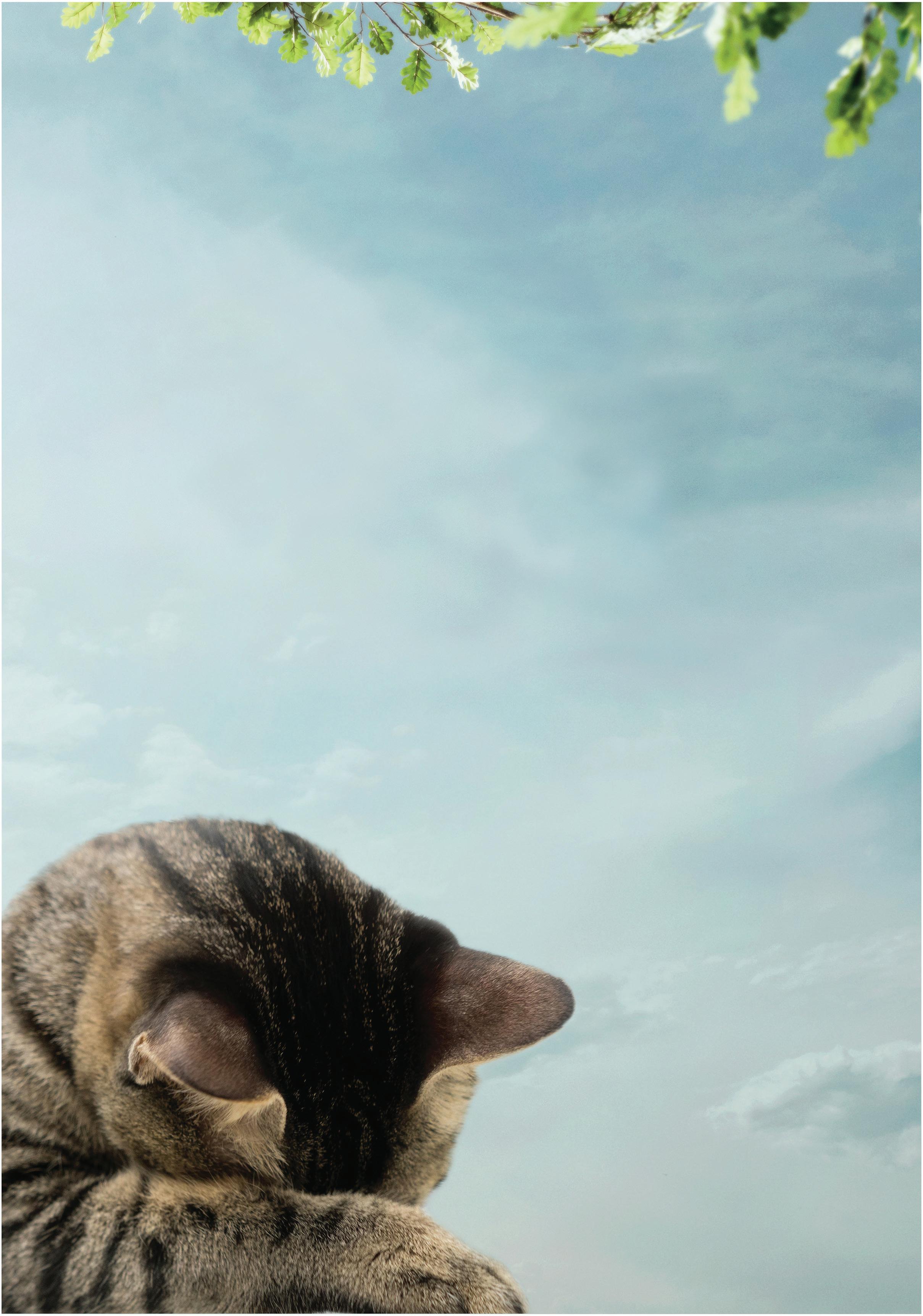
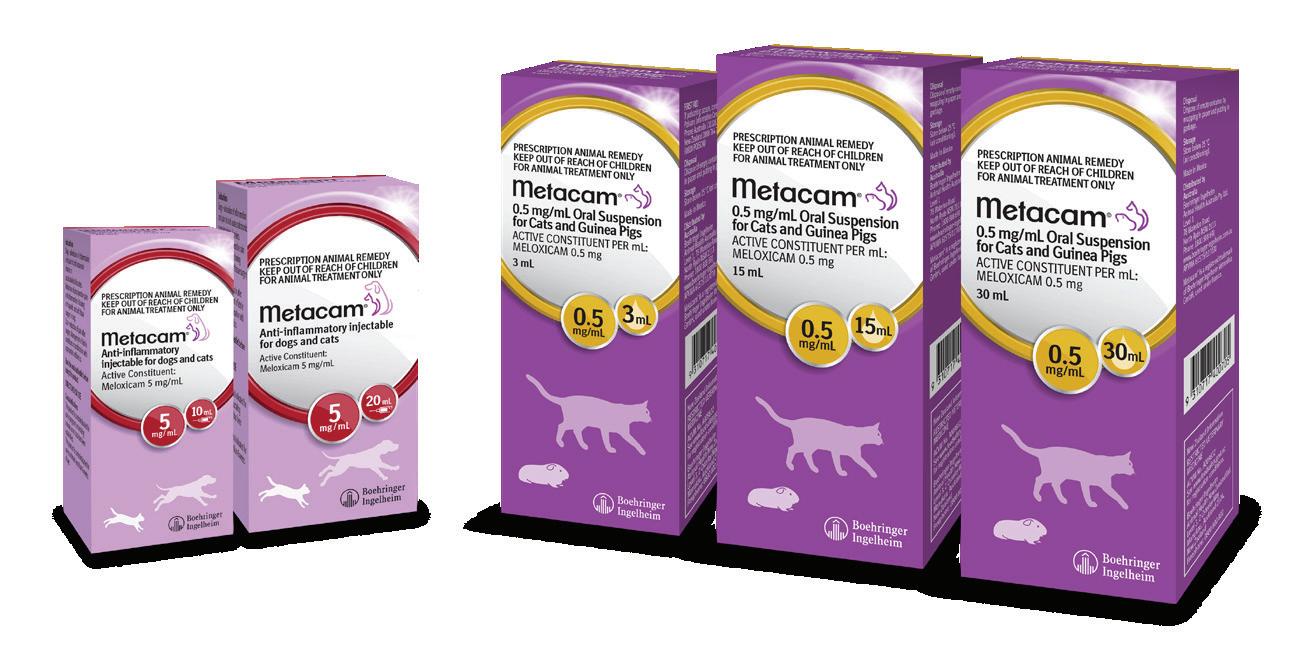
Pain behaviour in cats may be subtle and can be difficult to recognise1
See product label for full claim details and directions for use. Boehringer Ingelheim Animal Health Australia Pty. Ltd. Level 1, 78 Waterloo Road, North Ryde NSW 2113. ABN 53 071 187 285. ®METACAM is a registered trademark of Boehringer Ingelheim Vetmedica GmbH – used under licence. All rights reserved. FEL-0009-2023
1. Steagall, P. V. et al. (2022). 2022 ISFM Consensus Guidelines on the Management of Acute Pain in Cats. J Feline Med Surg, 24(1), 4-30.
Order Metacam® Oral Suspension for Cats and Metacam® Anti-Inflammatory Injectable for Dogs and Cats today. Contact your Boehringer Ingelheim Territory Manager to access tools to optimise feline pain assessment and management.
“Whenever possible, NSAIDs should be part of an acute pain management protocol”
– 2022 ISFM Consensus Guidelines on the Management of Acute Pain in Cats1
Discusses typical behaviours, such as destructiveness, excessive vocalisation and inappropriate elimination, exhibited by dogs with separation-related disorders and the effects of behaviour-modification techniques and pharmacotherapy treatments.
Introduction
Laboratory mice are kept in strictly controlled environmental conditions to minimise possible sources of variability in experiments but it is also important to find a balance with animal welfare and even carer satisfaction (Baumans &Van Loo, 2013). Ongoing research aims to both understand the possible impact of mouse behaviour and physiology on experimental outcomes, and find ways to improve welfare.
Discussion
Gaskill et al. (2013) explored the benefits of nesting material on thermoregulation and quantified the amount to sufficiently reduce cold stress for three common strains of mice (C57BL/6, CD-1 and BALB/c). Mice of the s ame strain (n=24 each strain) were housed in same-sex families of three and given 8g Enviro-Dri nesting material (FiberCore, Cleveland, OH, USA) or none. ng.
The four-week study found higher-quality nests were dome-shaped and provided good insulation, demonstrated by thermal imaging. These mice had reduced weekly food consumption, reflecting lower energy requirements, and BALB/c mice showed a reduced expression of uncoupling protein 1mRNA in brown adipose tissue, indicating reduced non-shivering thermogenesis. Males of all strains built better nests, ate less food, had lower corebody temperatures and higher end bodyweights than females. Nesting males also had lower plasma T4 concentrations than controls, reflecting a lower metabolic rate. The authors postulated that no difference in thermoregulation was detected in females due to their higher thermal comfortrange, so the 8g of nesting material provided was insufficient to significantly reduce cold stress. They concluded that although different strains appear to use different behavioural and physiological thermoregulatorystrategies, 8g of nesting material was sufficient to alleviate thermal stress in males at 20°C ambient temperature, but moreis required by females.
Gaskill et al. (2013) noted that corebody temperatures increased when cages were being disrupted and during handling, reflecting physiological changes during simple husbandry procedures. Another study (Gouveia &Hurst, 2013) specifically examined the effect of handling methods on mice anxiety and behaviour. They expanded on a previous study (Hurst & West, 2010), which demonstrated reduced anxiety by handling mice using a “home” tunnel left permanently in their home cage, by examining whether familiarity with the tunnel was significant.
Two strains of mice (ICR(CD-1 and C57BL/6) weredivided into groups (n=8x2 mice in each group for each strain) based on handling method: 1. Tail handling; 2. Tunnel handling: i) home tunnel, ii) shared tunnel experienced (prior exposureto tunnel) and iii) shared
tunnel only (no prior exposure to tunnel).
Mice were handled over 9 days, their voluntary interactions with the handler analysed and anxiety levels measured in an elevated plus maze (EPM) on Day 10. Because handling procedures were distinct from one another, blind handling was not possible. However, unconscious handler or observer bias was deemed highly unlikely to have a significant effect based on a previous study (Hurst & West, 2010).
All tunnel-handled mice, regardless of strain, sex or tunnel familiarity, habituated to the handling method, with the home tunnel treatment adapting faster. They displayed increased voluntary interactions with the handler over time and reduced anxiety behaviour in the EPM test. Tail-handled mice failed to habituate to handling, consistently avoiding interaction with the handler and demonstrating greater anxiety behaviour in the EPM test. However, only a single measure of anxiety was made at the end of the treatment period. It may be preferable to assess anxiety levels over time using, for example, faecal corticosterone concentrations. The use of multiple measures helps to give a more complete picture of anxiety
Kalliokoski et al. (2013) utilised many parameters to measure three different forms of stress in mice: acute, oxidative and emotional. They examined whether male BALB/c mice (n=16) could habituate to individual housing in metabolism cages, comprising a small living area on wire mesh with no bedding, shelter or enrichment – all factors that have been shown individually to induce stress or discomfortin mice (Kalliokoski et al., 2013; Baumans & Van Loo, 2013).
Arange of biochemical, clinical and behavioural measurements were made, but a full description of the rigorous methods employed is beyond the scope of this essay and readers are encouraged to read Kalliokoski et al. (2013) to fully appreciate their detailed methodology.Compared to standard-housed mice, metabolism-caged mice had an abnormal physiology with: veryhigh faecal corticosterone metabolite (CORT) concentrations; elevated hypoth-alamic-pituitary-adrenal axis activity; post-experiment elevated corebody temperature(stress-induced hyperthermia); various changes possibly due to thermoregulatorydemands, including increased feed intake, higher piloerection and an increased metabolism, reflected in high concentrations of creatinine and oxidised nucleic acid metabolites. Metabolism-caged mice thus had a significantly increased metabolism that would be detrimental to their health and skew experimental results. Accordingly, the authors recommended that if metabolism cages are to be used, minimal time be spent in them.
While each paper focuses on a different aspect of laboratory-mouse husbandry, all attempt to better understand the animal’s wellbeing using measurable, specific variables.
Kalliokoski et al. (2013) had the most rigorous methodology and went a step further, using statistical analyses to assess the efficacy of their measurements as parameters for measuring stress. They concluded that faecal CORT output, fur scorings and stress-induced hyperthermia were good tools for evaluating the wellbeing of mice, encouraging their use infuture studies. Feed intake, water intake and bodyweight were not found to be useful stand-alone welfare parameters, and it was recommendedthat such measurements be interpreted with caution. Accordingly, the studies of Gouveia & Hurst (2013) and Gaskill et al. (2013) may benefit from future work using more accurate stress measures.
Conclusion
It is evident that mice are highly reactive to their environment, displaying behavioural and physiological changes that may skew experimental results and compromise their wellbeing. Each paper provides compelling arguments for environmental refinement (provision of adequate nesting material, tunnel handling and reduction in metabolism-cage use) to improve laboratory-mouse welfare based on the results of rigorous scientific method with distinct, measurable parameters. For confined laboratoryanimals it is important to find balance between animal welfare and experimental validity (Baumans & Van Loo, 2013) and, encouragingly,research in this field is ongoing.
■ HANNAH PATRICIA EDWARDS
References
Baumans, V., Van Loo, P.L.P.2013 How to improve housing conditions of laboratory animals: The possibilities of environmental refinement. The Veterinary Journal, 195, 24-32. Gaskill, B.N., Gordon, C.L., Pajor, E.A., Lucas, J.R., Davis, J.K., Garner,J.P.2013 Impact of nesting material on mouse body temperature and physiology. Physiology and Behaviour, 110-111, 87-95.
Gouveia, K., Hurst, L.J. 2013 Reducing mouse anxiety during handling: effect of experience with handling tunnels. PLoS ONE,8:6, e66401. Hurst, J.L., West, R. 2010 Taming anxiety in mice by non-aversive handling. Nature Methods,7, 825-826.
Kalliokoski, O., Jacobsen, K.R., Darusman, H.S., Henriksen, T., Weimann, A., Poulsen, H.E., Hau, J., Abelson, K.S.P.2013 Mice do not habituate to metabolism cage housing – a three week study of BALB/c mice. PLoS ONE,8, 3, e58460.
This essay is one of a number selected for The Veterinarian magazine Prize for Written Communication for Sydney University third-year veterinaryscience students.
Areview of recent research exploring the effects of common husbandry methods on the wellbeing of the laboratory mouse (Mus musculus): How science is working to improve animal welfare
TheVeterinarian FEBRUARY 2023 12 ■ www.theveterinarian.com.au ESSAY
INSEPARABLE
PEXION® is the only targeted therapy developed specifically for dogs with idiopathic epilepsy, balancing seizure control whilst preserving quality of life in patients.1,2
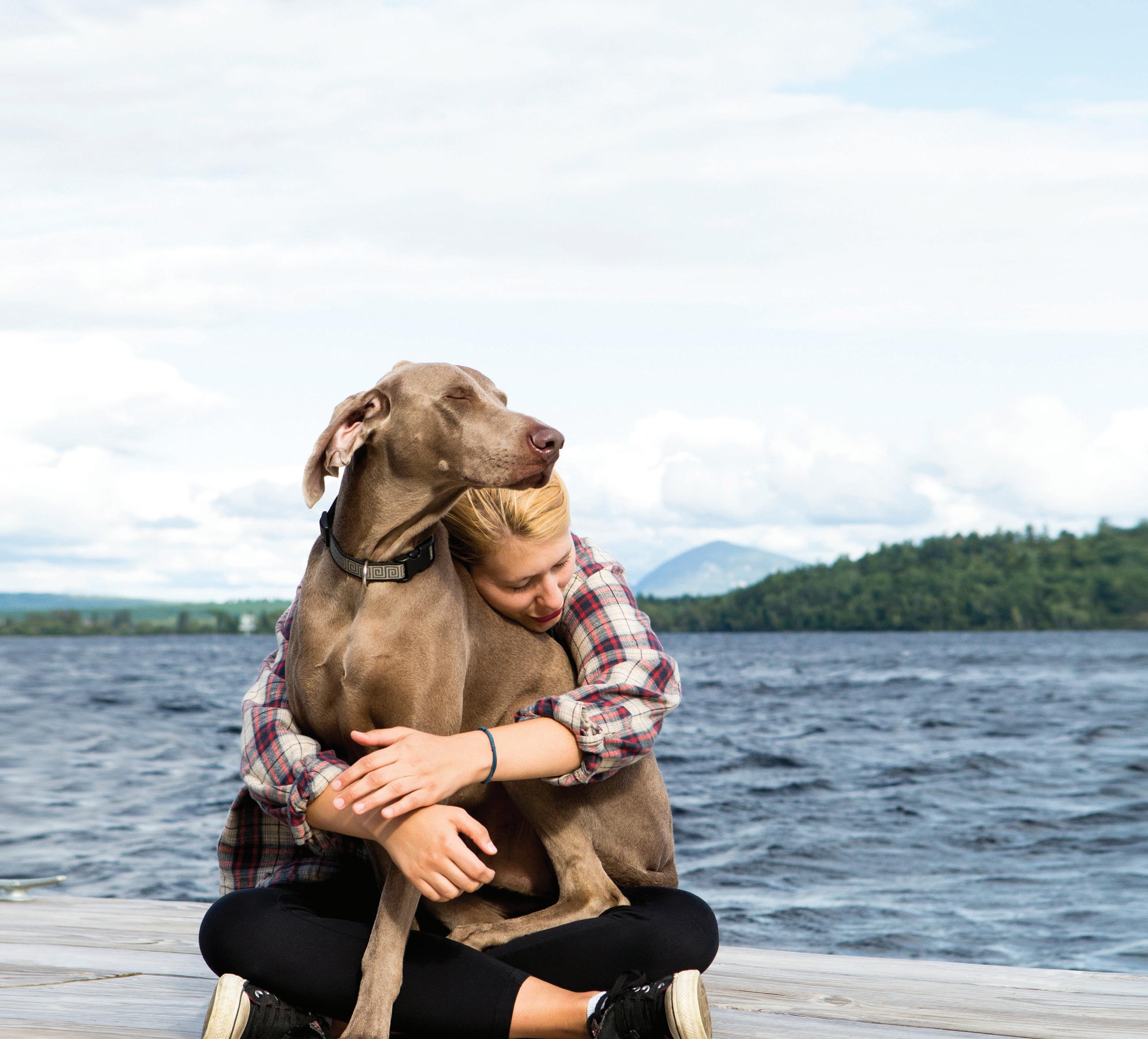
RECOMMENDED BY SPECIALISTS
“PEXION has provided a vital new tool for the treatment of epilepsy in dogs. As a neurologist, I now use it as my first choice anticonvulsant in drug-naive patients, because of its improved side effect profile over more traditional drugs, its improved hepatic safety, and its short half-life (which means I know whether it’s working fairly quickly). It is also one of the few anticonvulsants that has a sound body of evidence to support its use and it gives us one more option to use in our never-ending quest for that most elusive of things: perfect seizure control.”
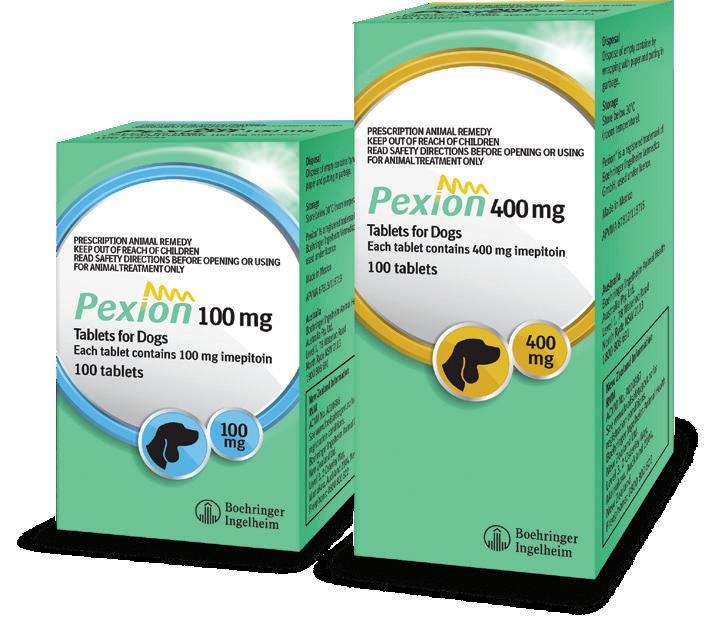
– Dr Sam Long BVSc
Hospital.

PhD DipECVN, Veterinary Referral
*If you are registering with Animal Health Academy for the first time, please use access code: myAcademy For more information, please contact Boehringer Ingelheim Animal Health on 1800 808 691 References: 1. Bhatti, SFM, et al. (2015) International Veterinary Epilepsy Task Force consensus proposal: medical treatment of canine epilepsy in Europe. BMC Vet Res.;11:176. 2. Tipold A, et al. (2015) Clinical efficacy and safety of imepitoin in comparison with phenobarbital for the control of idiopathic epilepsy in dogs. J Vet Pharmacol Ther.;38(2):160-168. Boehringer Ingelheim Animal Health Australia Pty. Ltd. Level 1, 78 Waterloo Road, North Ryde, NSW 2113. Toll Free 1800 808 691. ®PEXION is a registered trademark of the Boehringer Ingelheim Group. All rights reserved. AU-CAN-0003-2023
to rediscover
Scan
the role of PEXION in managing canine idiopathic epilepsy*
Fur, fin, and feather: management of animal interactions in Australian residential aged care facilities
Animal-assisted interventions (AAI) have been occurring in Australian Residential Aged Care Facilities (RACF) for more than 40 years and may relieve loneliness and improve quality of life. The presence of animals in RACF poses an inherent risk to residents and the animals involved. Little is known about the policies and guidelines for including animals in the Australian RACF. We anticipated that most RACFs would have some policies, but they may lack the detail necessary to keep humans and animals safe. Using an adapted survey, we surveyed and interviewed a small but representative sample of Australian RACF managers. The results demonstrated that RACF did have animal policies; however, the content regarding the need for hand washing, infection prevention, and animal welfare was lacking. Including unregulated family pets in RACF was an unexpected additional risk factor identified during data analysis. Thereis a need for national guidelines tied to the national aged care policy, which includes training and educational resources for RACF and AAI providers.
Wendy Newton1,Tania Signal2,Jenni A Judd3 Animals (Basel).2022 Dec 19;12(24): 3591.doi: 10.3390/ani12243591.
1School of Health, Medical & Applied Sciences, Central Queensland University, 6 University Drive, Bundaberg, QLD 4670, Australia.
2School of Health, Medical & Applied Sciences, Central Queensland University, Building 6, Bruce Highway, Rockhampton, QLD 4702, Australia.
3Research Division, Central Queensland University, 6 University Drive, Bundaberg, QLD 4670, Australia.
Free PMC article
Veterinarians' experiences of treating cases of animal abuse: an online questionnairestudy
Background: This study aimed to examine veterinarians' experiences of treating cases of nonaccidental injury and other forms of animal abuse and to assess their support needs and barriers to reporting cases.
Methods: An online questionnairewas completed by 215 veterinarians. The survey included items on demographics and veterinary experience, experience of nonaccidental injuries during the last 12 months, case studies, perceptions of the roles of veterinarians in identifying and reporting cases, and barriers to reporting.
Results: Fifty-three percent reported treating cases and 9% reported suspected cases of abuse in the last 12 months. Experience of abuse in the last 12 months did not varyin terms of veterinarians' age, sex or number of years in practice. The most commonly affected animals were dogs, cats and rabbits, and the most common forms of abuse wereneglect and physical abuse. Case studies focused on physical abuse cases, but neglect cases moreoften resulted in death. Veterinarians showed high concern about animal abuse but varied in their confidence to intervene and perceived barriers to reporting.
Conclusion: Experience of animal abuse is common, and veterinarians feel a strong moral duty to act, but can lack confidence in intervening. Abuse cases affect stress levels and compassion fatigue; therefore, supportand training are needed.
Joanne M Williams1,Laura Wauthier1;Scottish SPCA2; Monja Knoll1
Vet Rec. 2022 Dec;191(11): e1975.doi: 10.1002/vetr.1975.
1Clinical and Health Psychology,School of Health in Social Science, University of Edinburgh, Edinburgh, UK.
2Scottish SPCA, Dunfermline, Scotland.
Review: connecting circularity to animal welfare calls for a 'novel' conceptual framework based
on integrity
The current food system is not sustainable. Circular agriculture aims to save the environment and produce food sustainably by closing nutrient cycles, possibly without improving animal welfare. This paper proposes a new conceptual framework, called a circular welfare economy (CWE), to facilitate a transition towards asustainable agriculture based on integrity. The CWE framework explains how welfare relates to circular agriculture, how potential conflicts can be solved and what future livestock farming could look like. CWE applies the notion of circularity to welfare defined as the quality of life as perceived by the individual itself. CWE also identifies human integrity, defined as being open and honest, as a sine qua non for sustainability. Animal-welfare problems arise when animals are merely used as a means, e.g., for profits. Instead, profits and circular agriculture are means to the end of welfare. In a CWE, welfare is promoted sustainably, without causing undue need frustration in other individuals. This requires informed moral decision-making involving human integrity and the closure of welfare-related feedback loops. Conflicts between circular agriculture and animal welfare are solved by weighing all welfare needs impartially. Three future scenarios are presented: Animal-welfare-exclusive circular agriculture, which resembles modern intensive livestock farming, animal rights agriculture without livestock farming, and a CWE-based agriculture which integrates circular agriculture and animal welfare. In the latter case, we will not use animals merely as a means to close nutrient cycles, but take everyeffort, openly and honestly, to understand and benefit their points of view as we do our own.
MBMBracke1,I J M M Boumans2,H J Nijland3,E A M Bokkers2 Animal. 2022 Dec 9;17(2): 100694.doi: 10.1016/j.animal.2022. 100694.
1Department of Animal Welfare and Health, Wageningen Livestock Research, Wageningen University & Research, 6708 WD Wageningen, The Netherlands. Electronic address: marc.bracke@wur.nl.
2Animal Production Systems Group, Wageningen University & Research, P.O. Box 338, 6700 AH Wageningen, The Netherlands. 3Section Communication, Philosophy and Technology, Wageningen University & Research, 6706 KN Wageningen, The Netherlands. Free article
Pain recognition in fish
Empirical evidence has demonstrated that fish experience pain, and so to ensuretheir good welfare, it is vital that we can recognize and assess pain. A range of general, behavioural, and physiologic indicators can be used when assessing pain in fish. Many of these can be used at the tank side and aretermed operational welfare indicators, whereas some require further computer or laboratoryanalysis. Behavioural indicators arevalid and have been shown to profoundly differ between nonpainful and painful treatments in fish. However, these are not universal, and species-specific differences exist in behavioural responses to pain.
Lynne U Sneddon1,Jonathan A C Roques2 Vet Clin North Am Exot Anim Pract. 2023 Jan;26(1): 1-10. doi: 10.1016/j.cvex.2022.07.002.
1Department of Biology and Environmental Sciences, University of Gothenburg, Medicineragatan 18A, Gothenburg 413 90, Sweden.
2Department of Biology and Environmental Sciences, University of Gothenburg, Medicineragatan 18A, Gothenburg 413 90, Sweden; SWEMARC, the Swedish Mariculture Research Center, University of Gothenburg, 18A, Gothenburg 413 90, Sweden.
■ EDITEDBYJENIHOODBSc(Hons)BVMSPhD
Abstracts TheVeterinarian FEBRUARY 2023 14 ■ www.theveterinarian.com.au
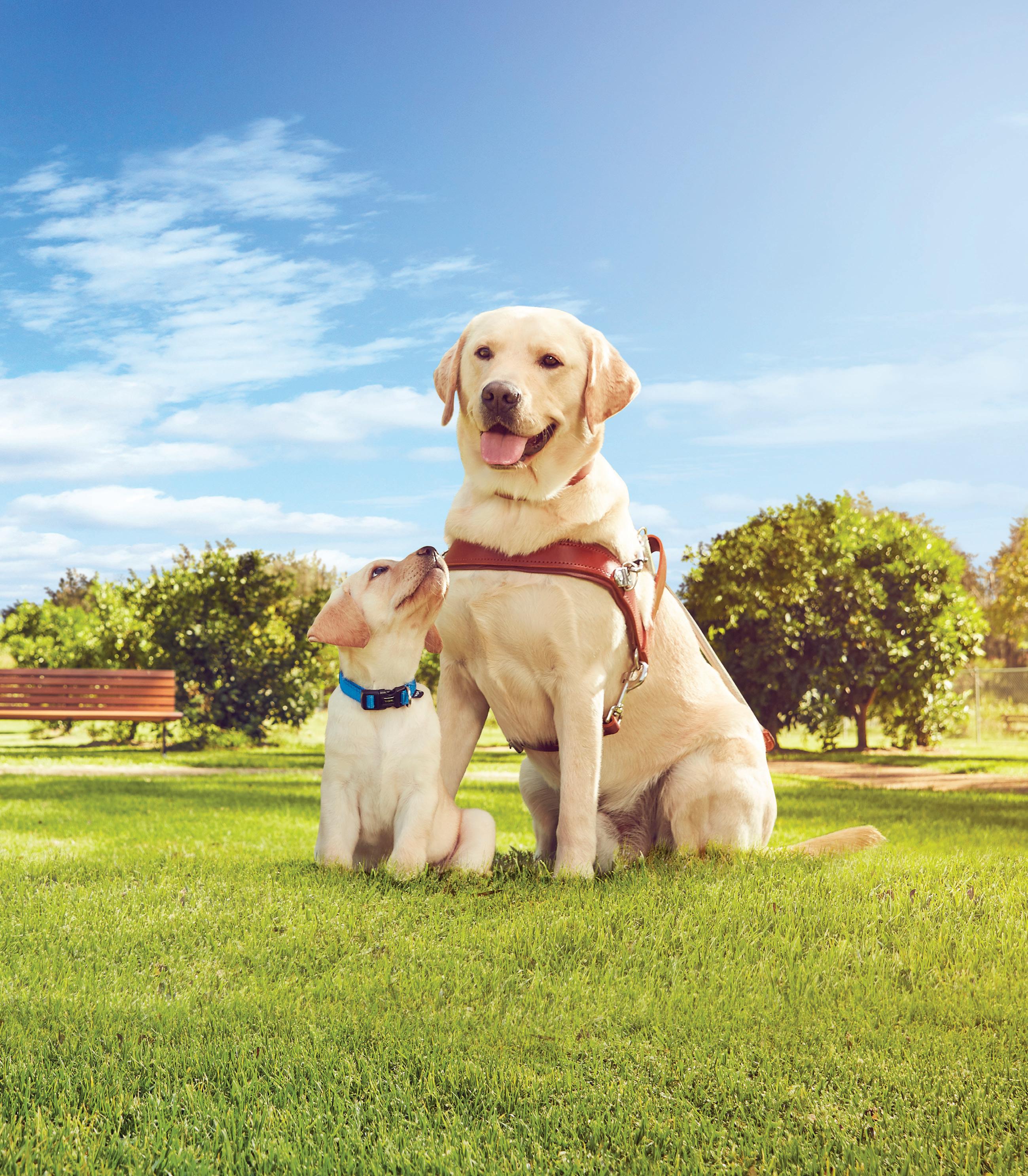
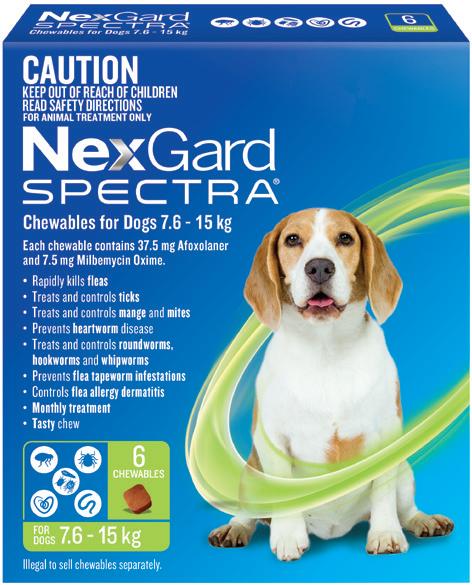
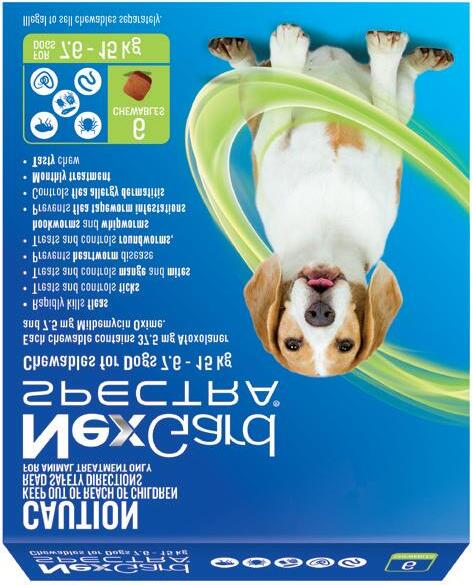
Guide Dogs use and trust Australia’s No.1 parasite protection for dogs.* TRUSTED PARASITE PROTECTION FROM PUP TO PROFESSIONAL See product label for full claim details and directions for use. For more information contact Boehringer Ingelheim Customer Care on 1800 808 691. *Australian Animal Health Industry Audit Report (Baron Strategic Services) – Canine Parasiticide Sales MAT June 2022. Boehringer Ingelheim Animal Health Australia Pty. Ltd. Level 1, 78 Waterloo Road, North Ryde NSW 2113. ABN 53 071 187 285. ®NEXGARD SPECTRA is a registered trademark of the Boehringer Ingelheim Group. All rights reserved. PET-0183-2022B
2022 THEYEARINREVIEW
Alook back at the past twelve months
on Christmas Eve, and shortly afterwards she was confirmed to have died. In a statement posting tosocial media, a zoo spokesperson said preliminary veterinary findings indicated heart problems and that further investigations are in progress.
Afemale pygmy hippo calf died suddenly at Taronga. Nicknamed the “little watermelon on legs”, the calf was born in November 2021 and quickly became a popular attraction at the zoo. The calf was found unresponsive
Veterinarians were among those recognised in the 2022 Australia Day Honours list. Robert Johnson was appointed a Member of the Order of Australia for significant service to veterinary science and professional societies. A former AVA president, Johnson AM is chair of the NSW Department of Primary Industries Stock Welfare Panel, and director of Vets Beyond Borders. Arthur Charles Webster received the same honour for significant services to veterinary science, business and the tertiary education sector. Webster is an Honorary Fellow
of the University of Sydney and has undertaken aid projects around the world.
The AVA called on state and territory governments to recognise that all veterinary services were highly impacted by COVID-19, and to implement the National Cabinet guidelines, so veterinary teams could have flexibility to manage close contacts and ensure veterinary services could be delivered. In states affected by the omicron variant, 87 per cent of veterinary practices experienced staffshortages due to COVID-19 with 25 per cent temporarily closing as a result, and a further 31 per cent reducing opening hours, making it increasingly difficult for owners to obtain appointments.
Animal welfare charity
Companion Animal Network Australia (Australia CAN, formerly
Animal Welfare League Australia) appointed its first Chief Executive Officer, Trish Ennis. Ennis joined Animal Welfare League Australia (AWLA) in December 2019 as National Executive.
To help identify, prevent, and mitigate risks and impacts of emerging diseases in wildlife and humans, a four-year federally funded program was launched in early January. Led by Wildlife Health Australia, principal objectives were the protection and enhancement of the natural environment, and the creation of along-term sustainable wildlife health framework. The organisation also has a strong One Health focus that recognises the interdependence of human, animal, and environmental health.
CLINICAL REVIEW
Penny Linnett: Body temperature regulation: a review
Following the departure of Bidda Jones AM who stepped down from the role of RSPCA Australia’s Chief Science Officer in December 2021, the organisation has appointed Suzanne Fowler to the position. She was previously the Australian National University’sSenior Veterinarian and Head of Animal Services. Fowler said she was ‘delighted’ to be joining the RSPCA team,
and to lead the organisation’s science and policy work.
Australia’s Chief Veterinary Officer confirmed Japanese encephalitis virus (JEV) had been detected in piggeries across several states, with two human deaths reported. In early March Mark Schipp said JEV had been diagnosed at one piggery in Victoria’s north, one piggery and Queensland and six piggeries in NSW,with cases subsequently confirmed in South Australia.
In late February a Victorian man in his 60s succumbed to the JEV outbreak, and this was followed by the death of a NSW man in his 70s on March 9.
After being under review for several years changes to Tasmania’s Cat Management Act 2009 were finally introduced. The legislation came into effect on March 1 and requires all cats four months and older to be
desexed and microchipped. It also limits to four the number of cats an individual can keep on their property unless they have aMultiple Cat Permit. Some exceptions to this include people who are fostering a cat for a cat management facility or an approved organisation, cat boarding facilities, and veterinary establishments
RSPCA NSW commended the passing of the Companion Animals Amendment (Rehoming Animals) Bill 2021 as an important step towards safeguarding impounded animals in the state. The amendment outlined measures councils must take towards rehoming a seized or surrendered animal, including working with rehoming organisations to provide impounded animals the chance to be rehomed.
CLINICAL REVIEW
Richard Malik: Treatment of FIP in cats with subcutaneous remdesivir followed by oral GS-441524 tablets
CLINICAL FEATURE
Nicole Byrne and Jarrad
Sanderson: Infectious bursal disease (veryvirulent form)
JANUARY/FEBRUARY
MARCH
Guide Dogs Victoria (GDV) launched an internal investigation after its chief executive officer appeared to endorse Treasurer Josh Frydenberg’s re-election tilt. In mid-April GDV’s Karen Hayes
Charity Paws for a Purpose began anational survey to learn about key factors that may prevent wider pet ownership in Australia. Mark Kelman, co-founder and CEO of Paws for a Purpose, said discovering why people are unable to own pets was key to finding ways to help spread the benefits of pet ownership – with “pets” defined as any domesticated creatures ranging from insects to horses.
Thousands of cattle across Indonesia’s East Java and Aceh provinces werethought to be infected with Foot-and-mouth disease (FMD), with fears that the disease may spread further. More than a dozen cattle had died from the highly contagious viral disease since the first confirmed case was found in Gresik, East Java in late April. The outbreak coincided with the Eid-al Fitr holiday period, dur-
appeared in a social media video posted on Frydenberg’s Facebook page and featured in letterbox leaflets delivered in the seat of Kooyong. The subsequently deleted video clip showed Hayes praising Frydenberg’s contribution to GDV.
The Australian Association of Psychologists (AAPi) supported calls by the Australian Veterinary Association for both major political parties to commit to investing $3 million over five years to save the lives and wellbeing of Australian veterinarians. AAPi Executive Director Tegan Carrison said veterinarians had one of the highest rates of suicide in the world and ongoing mental health support was crucial.
The Australian Veterinary Association (AVA) expressed disappointment with the
ing which Muslims in the country travel back home. Indonesia’s Agriculture Ministry locked down the six districts in the affected provinces, in the hope to control spread and mutation.
A28-year-old Condobolin woman was sentenced to custodial time for aggravated animal cruelty and other charges relating to the death of five dogs. The woman pleaded guilty to two counts of aggravated cruelty leading to the death of the dogs. She also pleaded guilty to one count of failing to provide proper and sufficient food, and two counts of failing to provide veterinary treatment to the one surviving dog found on her property. The woman will serve 18 months’ imprisonment with a non-parole period of nine months and is forbidden to own or care for any animal for 10 years.
snubbing of veterinarians in the recent Federal budget. AVA Head of Veterinary and Public Affairs atAVA, Cristy Secombe, said vets were struggling with a lack of sector-specific support. “The human health sector received around 150 million … to support medical students in rural and remote Australia. The veterinary profession was asking for a relatively small amount of HECS fee forgiveness to encourage vets to work rurally, so we’re disappointed not to see the funding.”
The World Health Organization estimated that at least 50 per cent of vaccines are wasted globally each year, with a lack of facilities and temperature control the major cause. CSIRO researchers encapsulated live virus vaccines with a dissolvable crystalline material called MOFs (metal
After decades in the making, the plan to breed mountain pygmy-possums and reintroduce them into lowland rainforests began. In early May 14 of their number were introduced to their new home near Lithgow. There, in a newly built breeding facility at the Secret Creek Sanctuary, the mountain pygmy-possums joined afew of their Burramys parvus species who had up until now been living in temporary enclosures awaiting construction of their new dwelling. The project, led by UNSW Sydney and part nered by wildlife foundations and government conservation programs, received a boost from an unexpected quarter when the Prague Zoo offered to inject morethan $190,000 towards the building of the breeding facility following the devastating
the D. L. Serventy Medal recognises and celebrates conservation work that has not been done as part of aprofessional career. It is awarded to ‘those who labour in the field for a love of nature and a determination that it should be conserved’. Announced at the end of May, the 2022 recipient of the award was Tasmanian Eric Woehler, OAM. Woehler’s work has been recognised by Tasmania’s Natural Resource Management agencies, two of which have incorporated shore- bird and seabird conservation into their Strategic Plans and supported his field surveys and on-ground conservation efforts.
Awarded by BirdLife Australia to aprofessional ornithologist for outstanding published work on birds in the Australasian region,
The Australian Veterinary Association (AVA) has announced THRIVE, a veterinary wellness
organic frameworks), which protected the integrity of vaccines for up to 12 weeks and at temperatures as high as 37 degrees Celsius. Without refrigeration the vaccines would otherwise last only afew days. CSIRO scientist and immunologist, Daniel Layton, said the breakthrough science would focus on proving the approach for other animal and human vaccines, including mRNA COVID-19 vaccines.
CLINICAL REVIEW
Penny Linnett: Rectal prolapse –abrief review
CLINICAL FEATURE
Kally Gross: Staying alert to lumpy skin disease
HEALTH BULLETIN
Rhyll Vallis, Nicole Byrne and Jarrad Sanderson: Emergency animal disease bulletin: Japanese encephalitis.
bushfires that swept eastern Australia in 2019-20.
CLINICAL REVIEW
Naomi Hansen: SIRS, sepsis, severe sepsis and septic shock
initiative aiming to assist vets and veterinary staff to have healthy and successful careers.
The initiative comes on the heels of the AVA’s whole-of-profession stakeholder research into veterinary mental health and wellness.
Outgoing AVA President Warwick Vale said there was no “magic bullet” to solving the issues impacting mental health in the profession.
“We know this will take time and effort, which is why we are making this core business for the association,” he said.
The veterinary sector was recognised in the Queen’s Birthday Honours List. Emeritus Professor Frank William Nicholas was honoured as a Member of the Order ofAustralia (AM) for “significant service to animal genetics, and to
tertiary education.” Michelle Louise Coffill was given the Medal of the Order of Australia (OAM) for her service to public administration and to animal welfare. At the Annual General Meeting of the Australian Veterinary Association (AVA) at the 2022 conference, several announcements were made. David Beggs was appointed as a Director, and Bronwyn Orr was reappointed, as elected by members. Orr graduated from JCU in 2013 and joined the AVA soon after. She is the ninth woman and the youngest person to be elected AVA President. She takes over from Warwick Vale, who remains a director on the AVA Board.
CLINICAL REVIEW
Penny Linnett: Aussie white ewe has an eventful Easter!
APRIL
JUNE
MAY
Research published recently in the journal iScience found genetic diversity in insurance populations of Tasmanian devils (Sarcophilus harrisii)is just as robust as it is in wild populations and confirmed
A$150,000 grant was awarded to researchers at Western Australia’s Harry Butler Institute’s Centre for Biosecurity and One Health at Murdoch University, to better understand the movement and spread of tick-associated cattle diseases. A detrimental threat to cattle, bovine anaemia due to (BATOG) disease is caused by a blood parasite in the Theileria orientalis group and is transmitted by bush ticks (Haemaphysalis longicornis) after they attach themselves to cattle and destroy the animals’ red blood cells. Charlotte Oskram, a senior lecturerat MU, and a world-leading tick researcher said the disease had huge implications for the welfare of animals, as well as devastating outcomes for cattle industries around the globe
In the 12 months to June, the cost of pets and related products
the effectiveness of captive breeding and management strategies. The study, led by researchers from the University of Sydney’s Australasian Wildlife Genomics Group, involved analysing and comparing 830 wild samples collected from 31 locations between 2012 and 2021, and those from 553 insurance devils, collected from zoos, and Maria Island off Tasmania’s east coast. No substantial differences were found in the diversity of over 500 critically important genes between the wild and insurance populations.
Former Australian polo captain Andrew Williams pleaded guilty to putting polo ponies at risk of suffocation and asphyxiation when he loaded them on the Spirit of Tasmania in 2018. Williams was driving 18 horses to NSW following a voyage to
rose 11.8 per cent, according to The Sydney Morning Herald. This is the largest increase in prices since June 2010. The Australian Bureau of Statistics’ consumer price index showed that the price of veterinary and other pet services rose 7.3 per cent – the highest jump since GST was introduced in 2001. While the costs were partially driven by pressures in supply chains, it is also due to increased utilisation of specialist animal care, and changes in how owners treat their charges.
The PetbarnFoundation raised a recordbreaking $1.169m through its annual Seeing Eye Dogs Appeal – enough money to fund the training and development of 23 Seeing Eye Dogs puppies to supportAustralians who areblind or have low vision. This year is the ninth Seeing Eye Dogs Appeal,
the mainland on the ferry, and 16 of the animals died on the journey. He pleaded guilty to using a method of transport likely to result in unreasonable and unjustifiable pain and suffering and 16 counts of failing to ensure the horses were individually stalled.
Registered beekeepers affected by the NSW Varroa mite (Varroa destructor)outbreak were told they would be compensated by an $18 million compensation package developed by governments and industry. The National Management Group (NMG) for Emergency Plant Pests endorsed anational response plan to eradicate Varroa Destructor from the state, the NSW Department of PrimaryIndustries (DPI) announced. Federal Minister for AgricultureMurray Watt said
and had the aim of raising $1m, $250,000 more than 2021’s target. It costs $50,000 and two years to train just one puppy and the current wait time for an Seeing Eye Dog is around six months. Vision Australia estimated there are 453,000 people in Australia who are blind or have low vision with this figure expected to increase to 560,000 by 2030, with moretrained dogs urgently needed.
The Australian Veterinary Association (AVA) warned dog owners of a very serious infection of dogs, leptospirosis, which has been detected across NSW with diagnoses on the Central Coast, Central and Northernbeaches areas of Sydney and the NSW South Coast. The AVA suggested all resident and visiting dogs in these areas be vaccinated against the frequently fatal disease.
following the death of Queen Elizabeth II. Queen Elizabeth’s interest in animals was well noted, and she was a patron of the RSPCA in England and Wales.
“We join the community, and our colleagues overseas, in sending our deepest condolences to the Royal Family and to the people of the United Kingdom,” an RSPCA spokesperson said.
the agreement ensured registered commercial beekeepers were reimbursed for equipment, bees, hives, and honey destroyed as a result of the eradication process. The Australian Chief Veterinary Officer, Mark Schipp and Deputy Chief Veterinary Officer, Beth Cookson travelled to Indonesia in late May to offer Australia’s assistance to combat and contain the outbreaks there of foot-andmouth disease (FMD) and lumpy skin disease (LSD). Indonesia has since made an emergency declaration, implemented movement restrictions, and has sourced and commenced FMD vaccination in some infected provinces. Australia offered assistance to combat and contain the outbreaks.
CLINICAL FEATURE
Naomi Hansen: Poisons and pets
Australia’sRoyal Societies for the Prevention of Cruelty to Animals (RSPCAs) expressed sadness
Scientists from CSIRO hope new gene technologies they have developed could help halt environmental damage caused by feral cats and other invasive species. Dubbed CRISPR-Cas9, ‘gene drive’ is a new area of science that can determine the sex of offspring and reduce the numberof animals able to reproduce, and therefore drive down
CLINICAL REVIEW
Tom Donnelly: COVID-19 in animals
CLINICAL REVIEW
Naomi Hansen: “Scruffy is having trouble breathing...”
populations over time. A total of 3823 Australians were surveyed about their supportfor the technology being used on feral cats with at least 86 per cent moderately to strongly supportive of its use in feral cat control in their area.
Launched in August, the Tasmanian Wildlife Rehabilitation Sector Strategy and Action Plan 2022–24 involved representatives from several organisations. They included Volunteer Tasmania, Bonorong Wildlife Sanctuary, the Department of Natural Resources and Environment, Wildcare Tasmania, and the Tasmanian Branch of the Australian VeterinaryAssociation. Jo Palmer, Minister for Primary Industries and Water,said the state
government allocated $460,000 over four years to assist the sector to build capacity and become sustainable over the long term, as well as to support care and services for Tasmania’sinjured and orphaned wildlife.
Following the release of the national State of the Environment Report, Tasmanian conservation groups called for the state government to release a report specific to the island state. Although aState of the Environment Report is required every five years under Tasmania’sState Policies and Projects Act 1993, no reporthas been produced since 2009.
CLINICAL REVIEW
Penny Linnett: Introduction to worms in chickens
JULY
SEPTEMBER AUGUST
The escape of five lions escape through a six-foot fence at Taronga Zoo was the subject of an ongoing internal review, the Sydney facility said. The incident took place on the morning of November 1, and veterinarians and keepers report all lions are doing well. Patrons present at the zoo as part of the ‘Roar and Snore’ package (which included an overnight stay) were evacuatedto safe zones. “The ongoing review found that while inside their exhibit, the lions played and interacted with the fence for approximately 20 minutes before four cubs, and, later, adult male Ato, were able to breach it,” astatement said.
AFrench-Australian veterinarian who was taken hostage in the northcentral African nation of
Alook back at the past twelve months
Devised to showcase Australia’s diverse wildlife and high light the decline of species due to habitat destruction from floods, drought, bushfires or land clearance, the winner in COSMOS Magazine’s inaugural competition to determine the most popular Australian mammal, was the tiny and critically endangered southern bent-wing bat (Miniopterus orianae bassanii). More than 50,000 votes were received from around the world during the voting period that saw the tiny coastal cave dwelling insectivorous bat beat the dingo into top spot.
Two veterinarians from regional Victoria returned to Australia after weeks helping injured animals in
Chad was freed. Jerome Hugonot was reportedly abducted at gunpoint on October 28 while working for the Sahara Conservation Fund (SCF), according to aspokesperson for Chad's government. A joint operation by Chadian and French security forces secured Hugonot’s release on October 30, which was announced on the Twitter account of Chad’s interim president, Mahamat Idriss Deby. “I am delighted with this happy ending,” Deby said. The French foreign ministry also announced Hugonot’srelease in a statement.
Animal Management in Rural and Remote Indigenous Communities (AMRRIC) utilised the storytelling power of hip hop music to inspire Indigenous communities about animal health with the launch of
Ukraine. Experienced vet Emma Tomkins and nurse Pauline Lillie run Hepburn Veterinary Clinic in Daylesford. In August the couple decided to pitch in and treat vulnerable animals in the war-torn nation through an initiative run by Worldwide Vets, a not-for-profit. Acommunity fundraising campaign raised $31,000 to cover costs, and Tomkins and Lillie departed Australia on September 8 for a convoluted trip to Vinnytsia in west central Ukraine.
The AVA called on the Victorian government to invest in key areas critical to veterinarians. The Association lobbied for sustainably resourced essential veterinary
the Dog Mob Cat Crew educational music video. Featuring the deadly talents of local childrenfrom the remote Indigenous community of Finke (Aputula) – a place of dog dreaming, the Dog Mob Cat Crew video promotes responsible pet ownership to highlight how this leads to strong animals, strong health, and strong communities. Creating the video was based on community centred creative practice which represents the intersection of collaboration, innovation, community, and culture.
Gippsland Vet Hospital in Maffra, Victoria became Australia’s largest regional veterinary clinic. Following a major extension, Gippsland Vet Hospital doubled in size and can offer patients a range of CT,hydrotherapy and physiotherapy services that
Australian pet care provider Greencross announced a commercial partnership with the University of Melbourne to operate the University’s Animal Hospital facility at Werribee. The new partnership will see the business offer both veterinaryclinic and 24-hour specialist and emergency hospital services at the Werribee site while assisting veterinary students in their pursuit of practical educational advancement.
services, protection of the mental health of vets, and modernisation of animal care and protection legislation. AVA Victorian Division President Hugh Millar said it was unsurprising veterinarians were in shortage on the 2022 Skills Priority List report. “People are leaving the profession because it’s not sustainable, that is, they feel they can’t make a valuable contribution and at the same time safeguard their own health and welfare,” Millar said.
CLINICAL REVIEWS
Richard Malik: A key role for molnupiravir in the management of cats with FIP in Australia
Naomi Hansen: The fluid prescription: intravenous fluid therapy
Supermarket chain Woolworths moved to acquire a 55 per cent stake in pet food and services company Petspiration Group, for a price of $586 million. Petspiration is the owner of retail brand PETstock, which has 276 outlets across Australia and New Zealand. The Woolworths move follows a sell-down of the supermarket chain’s stake in alcohol retailers, including Dan Murphy’s.
Areport from the UK’s Zoological Institute of Zoology found that adopting urban rewilding as an environmental management strategy could be a solution to help slow down biodiversity loss, reduce the impacts of climate change, and improve human health and wellbeing. Some of the practical and sustainable opportunities for urban rewilding include home gardens, cemeteries, council parks and gardens, urban water- ways and wetlands, and railways. Lead author Nathalie Pettorelli, Senior Scientist at the Zoological Society of London’s Institute of Zoology said that although urban rewilding was unlikely to help recover the world’s giraffe and lion populations, its benefits could improve human-wildlife coexistence through a recognition everyone has a role to play in helping address the environmental crises we all face.
would rival many metropolitan veterinary hospitals.
CLINICAL REVIEW
Penny Linnett: Pharmacology of local anaestheticsthetics
The AVA welcomed the latest Senate report on improving Australia’s biosecurity and response preparedness. The report recommended that the Federal Government work with the industry to improve the capacity and capability of production animal vets, especially in the regions.
AVA Head of Veterinary and Public Affairs Cristy Secombe said the report’s recommendations recognise the role vets play in the detection and management of biosecurity threats and demonstrate the need for greater support.
Guests at Taronga Western Plains Zoo can see firsthand how Taronga cares for an array of animals with previously behind- the-scenes hospital activities now on display to the public at a brand new Wildlife Hospital. The $14.6 million hospital opened in early December It was funded by the NSW Government and philanthropic donations. The new hospital increases the zoo’s capacity to treat and rehabilitate native wildlife, improves its ability to act as first responders in emergencies, and plays a pivotal role in conservationprograms for critically endangered species.
CLINICAL REVIEW
Penny Linnett: Overview of prolonged gestation in sheep and cattle
OCTOBER DECEMBER
NOVEMBER 2022
THEYEARINREVIEW
TOGETHER, WE CAN STOP PARVO IN AUSTRALIA.
You can help stop 10,000 puppy deaths and kitten deaths, annually in Australia, from canine and feline Parvo disease by joining Australia’s first early warning system for Parvo outbreaks. Powered by cutting edge cloud technology and smartphone optimised for ultra-quick logging of Parvo cases.
Become a champion of disease prevention, today at www.ParvoALERT.com
An initiative of www.pawsforapurpose.org
ParvoALERT.com provides the following benefits for veterinarians:
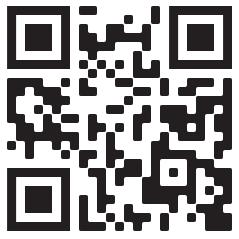
• Detailed Parvo case mapping
• Outbreak graphing
• Email alerts you can set up
• Hot spot reports you can run
• Enables university research to stop outbreaks
• Helps power prevention strategies
• Free to use
FIND OR REPORT CASES
Naomi Hansen
BVSc MACVSc graduated from Queensland University in 1997. She worked in mixed animal practice in Queensland after graduation, before moving to Canberra towork for John Aspley Davis at Kippax Veterinary Hospital. She has completed aresidency in emergency and critical careat Melbourne University and was a resident in the same field at the Pennsylvania University Veterinary Hospital in the US. She is veterinary director of North Coast Veterinary Emergency and Critical Care (NCVECC) in Sippy Downs, Qld. Hansen is a member of the Emergency and Critical Care Chapter of the ACVS.
Snakes: an envenomation update
Australia is home to some of the most venomous snakes in the world with the snakes known to be more active in the summer months (October to May). Retrospective human data suggests that 54% snake bites occurred around the victims’ home which makes their pets very susceptible.
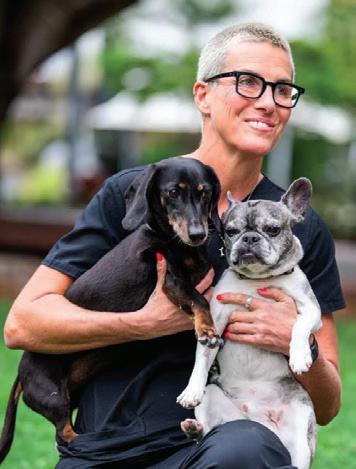
In Australia approximately 550 people per year are admitted to a public hospital following a snake bite, of these people, an average of two will die from the bite or associated
complications. The brown snake has been implicated in the majority of these deaths (23/35 deaths from snake envenomation between 2000 and 2016 were attributed to brown snake envenomation).
The species more commonly associated with severe snake envenomation in domestic animals across Australia are the brown snake (Pseudonaja sp.), tiger snake (Notechis scutatus) and red-bellied black snake (Pseudechis porphyricus). This list is not exclusive and there are other snakes that
have been associated with morbidity and mortality in domestic animal species but they are less commonly reported. These ‘other’ snakes include the death adder (Acanthophis sp. ), copperhead (Austrelap sp .), eastern small eyed sake (Cryptophis nigrescens ), white lipped snake ( Drysdalia coronoides), black whip snake ( Demansia sp .), king brown snake (Pseudechis australis: note this is a member of the black snake family), spotted black snake ( Pseudechis guttatus), Taipan (Oxyuranus scutellatus).
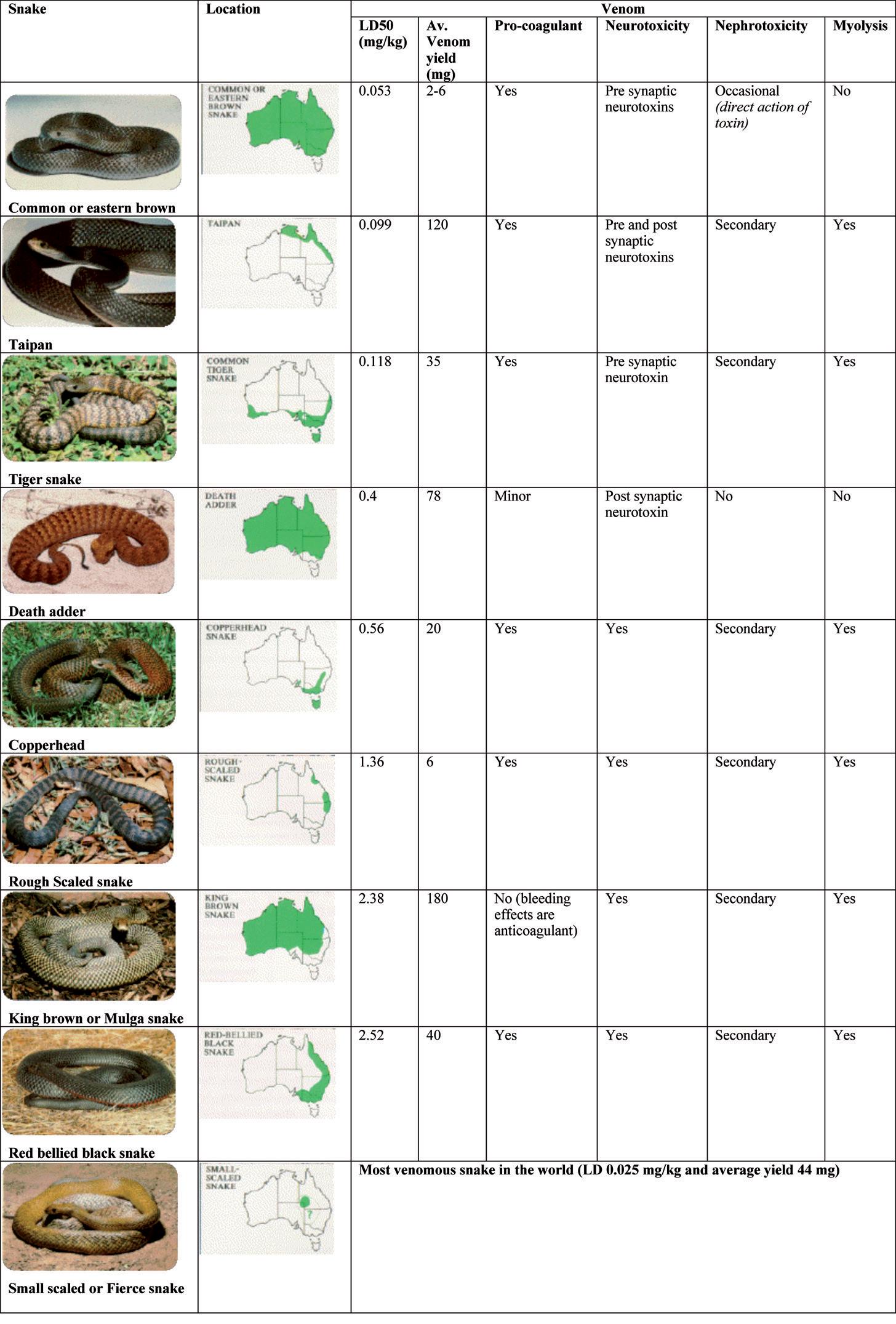
TheVeterinarian 21 FEBRUARY 2023 ■ www.theveterinarian.com.au Clinical Review
Vet-Tome

The atraumatic extraction system
The Vet-Tome is an automated periotome with foot pedal operation that offers precise tooth extraction with minimal or no alveolar bone loss and less trauma.
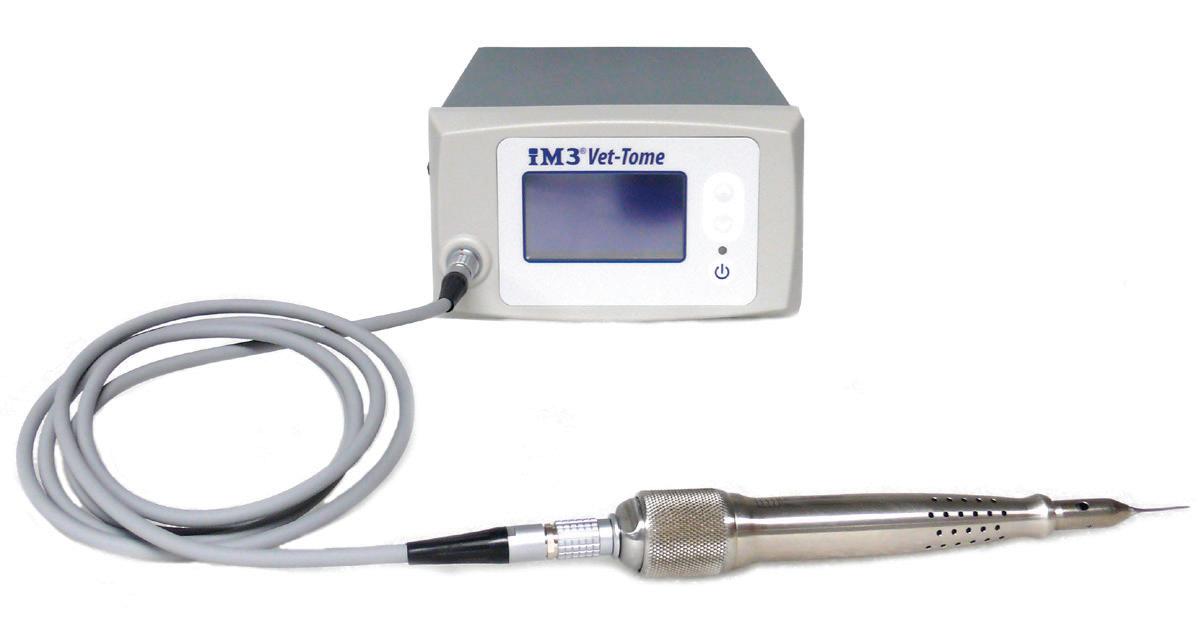
The electric Vet-Tome uses replaceable ultra-thin stainless steel tips coupled with the mechanical in-and-out action generated by the handpiece to cut the periodontal ligament, similar to a Luxator.
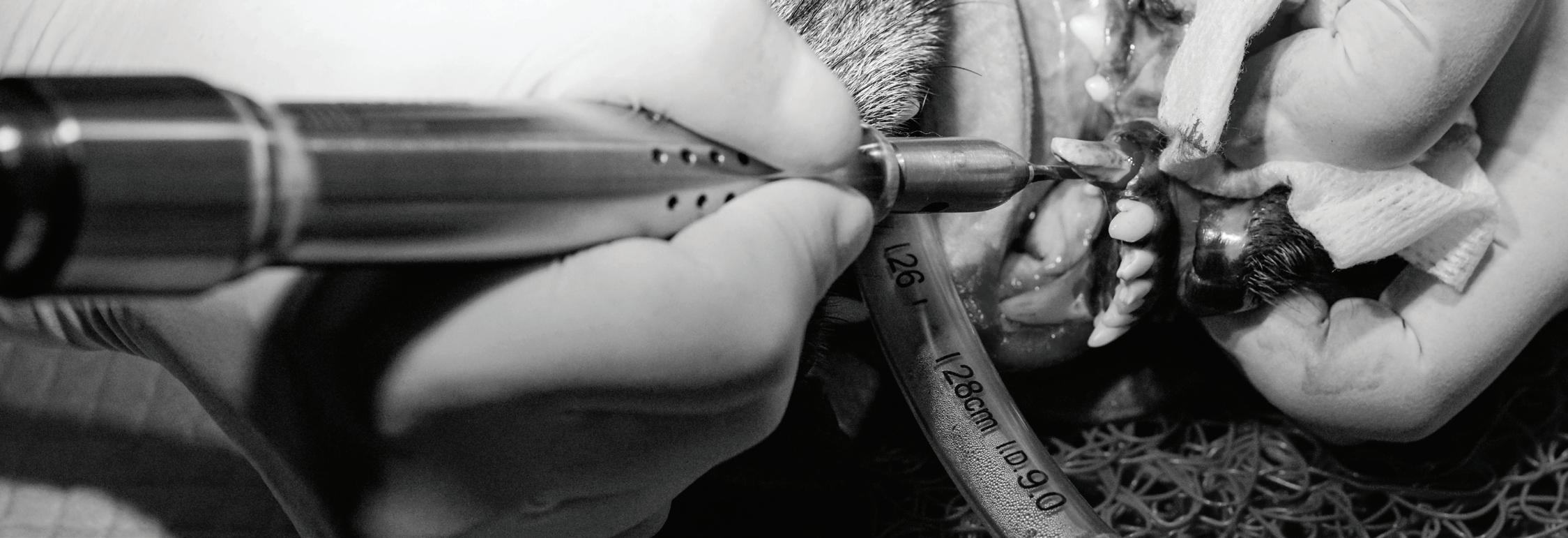
The non-twisting action of the Vet-Tome results in minimal tissue damage compared to units that reciprocate or use gentle vibration. The Vet-Tome tip does not generate heat, which allows you to work continuously.
With 10 adjustable power settings and different sized veterinary specific tips, the iM3 Vet-Tome is suitable for small cats to large dogs, and even lions.

See the side-by-side difference between using the iM3 VetTome, compared to hand instruments only.
Tooth 304 was extracted using the iM3 Vet-Tome and as you can see the labial plate of bone is intact.
Tooth 404 required surgical extraction due to pseudo-ankylosis and slight loss of periodontal ligament on the lingual side of this tooth.
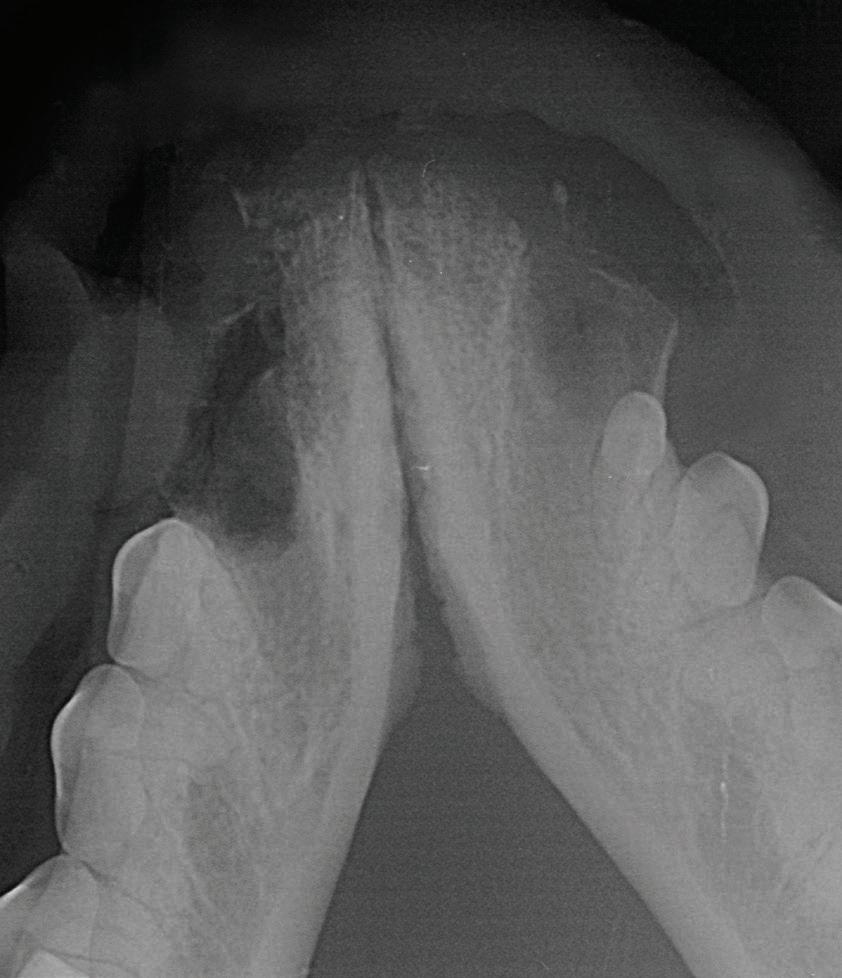
Tooth 304 took just 15 minutes to extract using the iM3 Vet-Tome, while tooth 404 took 60 minutes using hand instruments only.



Reduces trauma & alveolar bone loss
Thin flexible tips that curve with the tooth to cut the periodontal ligament
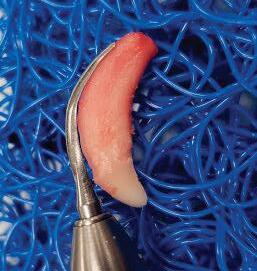
Reduces fatigue & extraction time
See the difference!

www.im3vet.com.au | Scan to see the Vet-Tome in action!
Tooth 404
Tooth 304
These ‘other’ snake species are less documented and for some (death adder and taipan) a specific antivenom is required. Tiger-brown antivenom is recommended for copperhead, eastern small eyed snake, white lipped snake and spotted black snake. Tiger-brown or CSL black snake antivenom is recommended for king brown envenomation.
Snake identification
Correct snake identification is essential to the correct management of snake envenomation
In veterinary practice, we often assume the species of the offending snake on the basis of geographical location and results of preliminary testing (i.e. PCV/TP, coagulation times, CK and AST).
This preliminary assumption is justified for two reasons:
■ Most snake envenomation patients are started with a vial of polyvalent (tiger-brown) antivenom.
■ The SVDK can take 30 minutes to return a result, this is a long time in an unstable patient.
BUT veterinarians should be more diligent in the use of snake venom detection kits (SVDKs), especially if there is clinical support for systemic envenomation and antivenom administration is required. Correct identification of the snake involved allows us to target our therapy with a monovalent antivenom.
SVDKs are considered 100% specific (i.e. a positive result is positive) but the sample timing and test technique may result in a false negative.
The reliability of the SVDK depends on the sample source and time lapse since the bite:
Venom (bite site or fang): The most reliable sample source
Urine: The protein binding of venom varies with the snake species so false negatives can occur if the urine concentration of venom is low (more likely to provide a positive response within 12h of envenomation)
oCats: may record a false negative result in the initial 5 hour period following envenomation
Blood: Read the directions carefully when testing blood (more likely to provide a positive response within 4 hours of envenomation
Knowledge of the offending snake species allows for better case management through:
■ Administration of the appropriate antivenom
■ Prediction of the clinical progression
■ Prediction of potential complications
SVDKs (Elisa test) can accurately identify the type of snake in 30 minutes of a bite
Clinical progression
The differential diagnosis for snake envenomation includes all forms of lower motor neurone paralysis/paresis (i.e. Tetrotoxins, tick intoxication, polyradiculoneuritis, organophosphate or carbonate intoxication, thromboembolic disease and meningitis/myelitis).
To differentiate these potential diagnoses from snake enveomation: the clinical onset of snake envenomation is generally acute, the progression rapid and is commonly accompanied by a coagulopathy.
Many of the clinical signs observed in human snake envenomation patients can be applied to domestic animals and will assist in the early detection of systemic envenomation:
<1 hr Headache, irritability, photophobia, nausea, vomiting, diarrhoea, confusion, coagulation abnormalities +/- hypotension and loss of consciousness (collapse). Collapse and vomiting may occur within minutes of a bite followed by an apparent ‘recovery’.
Aperiod of apparent recovery may be observed within 30 minutes of the bite, preceding the progression of clinical signs
1-3 hr Cranial nerve paralysis (dilatedpupils, salivation and respiratory distress), abdominal pain, haemoglobinuria, hypertension, tachycardia, haemorrhage
>3 hr Flaccid limb and respiratory muscle paralysis leading to respiratory failure, peripheralcirculatory failure (pallor and cyanosis), myoglobinuria and death.
Muscle destruction (myolysis) is associated with muscle tenderness and predisposes kidney failure.
The rate of progression is variable and depends on the patient body size, physiological status, snake venom potency and the dose of venom delivered.
Brown snake envenomation has been associated with an acute deterioration and death from severe cardiac depression (within 5 minutes of the onset of clinical signs)
Toxic components of snake venom
1. Neurotoxin
Neurotoxins act at the neuromuscular junction (NMJ) causing a progressive paralysis.
The initial effects of a neurotoxin appear 2-4 hours post envenomation (time taken for the venom to travel to the NMJ and attach)
Post-synaptic neurotoxins (tiger, brown, taipan and death adder) block neuromuscular transmissionby occupying the acetylcholine receptors at the motor endplate (this is reversible with antivenom) Pre-synaptic neurotoxins (tiger, brown, taipan and rough scaled snake)block acetylcholine release and their onset is delayed 30-60 minutes (this is reversible with antivenom) Mydriasis and slow pupillary light responses
Complete paralysis may take from 3-18 hours. Upper respiratory dyspnea may occur before respiratory paralysis from paralysis of the tongue and pharynx. These patients often require intubation +/- temporary tracheostomy and may require a period of ventilatory support.
Antivenom: Severe pre-synaptic paralysis (tiger snake, taipan and rough scaled snake) will not be reversed by antivenom BUT post-synaptic paralysis (death adder) may be reversed by antivenom
2. Pro-coagulant
Pro-coagulants act as prothrombin activators (fibrinogen consumption).
The clotting mechanism is activated by the conversion of prothrombin is converted to thrombin and fibrinogen converted to fibrin
Rapid defibrination or fibrinogen depletion (< 30 minutes) results in a clinical coagulopathy in the presence of normal platelet numbers and function (prolongation of both PT and aPTT) Fortunately, fibrinogen levels are rapidly restored (within 3-4 hours), this means that an improvement (they do not need to be ‘normal’ merely improving)in fibrinogen or PT when tested 4-6 hours after administration of anti-venom supports neutralisation of the pro-coagulant effect and resolution of the coagulopathy.
Restoration of the consumed coagulation factors may take upto 24 hours sequential in clinc coagulation tests maybe prolonged for this period and there is no benefit from additional antivenom provided fibrinogen and PT levels are showing improvement at 4-6h.
IF the fibrinogen is persistently low when tested 4-6 hours after anti-venom administration thereis indication for administration of more anti-venom.
Coagulopathies associated with tiger snake envenomation may resolve spontaneously (12-18 hours)
Fibrinogen, FDP and D-dimer levels will facilitate identification of fibrinogen consumption and differentiate a defibrination coagulopathy from an anticoagulant coagulopathy (unfortunately these tests are not always available)
Antivenom: Antivenom is the only effective treatment for this coagulopathy (several vials may be required).
Allow at least three (4-6) hours to lapse before deciding if more antivenom is required (a drop in fibrinogen
after this period or progressive prolongation of PT suggests the need for further antivenom treatment)
3.Anticoagulant
Rapid reversible coagulopathy without defibrination. FDP and D-dimer negative.
Antivenom: is the only effective treatment and the response is rapid.
4. Nephrotoxin
There are NO isolated nephrotoxins in Australian snake venom BUT secondary kidney damage from Australian snake envenomation does occur.
Kidney damage is believed secondary tothe following mechanisms:
■ hypotension
■ myolysis
■ coagulopathy
5. Myotoxin
Myotoxins bind to the muscle fibres causing progressive destruction of the muscle cells. The myolysis may take several hours tobecome clinically evident (creatinine kinase (CK) elevation and myoglobinuria)
The muscle damage cannot be reversed but the progression can be attenuated by antivenom administration
Patients show signs of progressive muscle weakness and pain
Muscle weakness must be differentiated from a flaccid neuropathy on neurological examination.
Clinical complications: Secondary renal failure, hyperkalaemia and hypocalcaemia.
Antivenom: Rapid resolution of clinical signs (weakness and pain) and a fall in CK (the halflife CK is 3-6h and AST 12 hours)
Medical management of snake bite Critically ill patients
The initial approach to all critically ill patients is as easy as ABC … snake envenomation patients are no exception:
THERAPEUTIC AIM: Maximise oxygendelivery to the tissues (maximise oxygen uptake, oxygen carrying and oxygen delivery).
1. Airway and Breathing:
Neurotoxins may cause upper airway paralysis before respiratory paralysis, these patients will improve with intubation and may require a temporarytracheostomy.
Chronic dyspnea from a functional upper airway obstruction predisposes laryngeal oedema and pulmonaryoedema,complicating recovery
Airway support
Aim for a sPO2 >92-93% (FiO22 21%)and pCO2 35-40 mmHg
The ‘cut off’ values for ventilatory support are sPO2<60 mmHg (FiO2 21%)and/or pCO2 >60 mmHg
Serial sampling will allow early identification of ventilatory and/or respiratory failure (sPO2 trending down and/or the pCO2 trending up)
Early identification and management of respiratory and/or ventilatory complications will minimise future complications.
Intubate and ventilate with 100% oxygen if ventilator y or airway failureis evident on presentation.
2. Circulation:
Patients may present in shock (poor pulses, tachyarrhythmia, pale mucous membranes and hypotension)and require intravenous fluid resuscitation. Hypotension and renal hypoperfusion will contribute to renal failure post treatment. Rapid volume resuscitation from shock is essential.
TheVeterinarian 23 FEBRUARY 2023 ■ www.theveterinarian.com.au Clinical Review
HEALTH Y S KI N COM ES FROM WITHI N
The ROYAL CANIN ® Skin Support diet is scientifically formulated to help assist dogs suffering from atopy and skin disease.
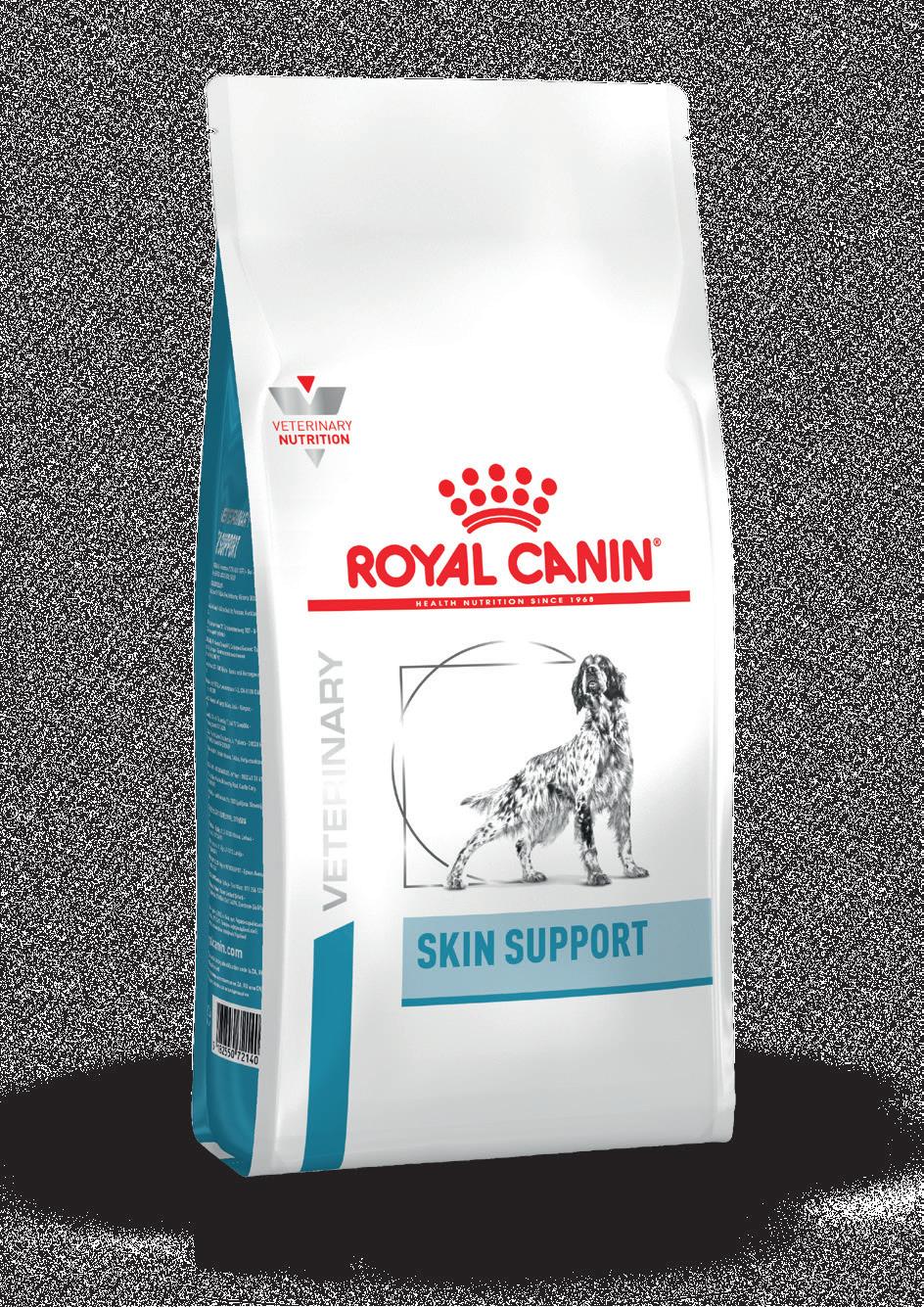
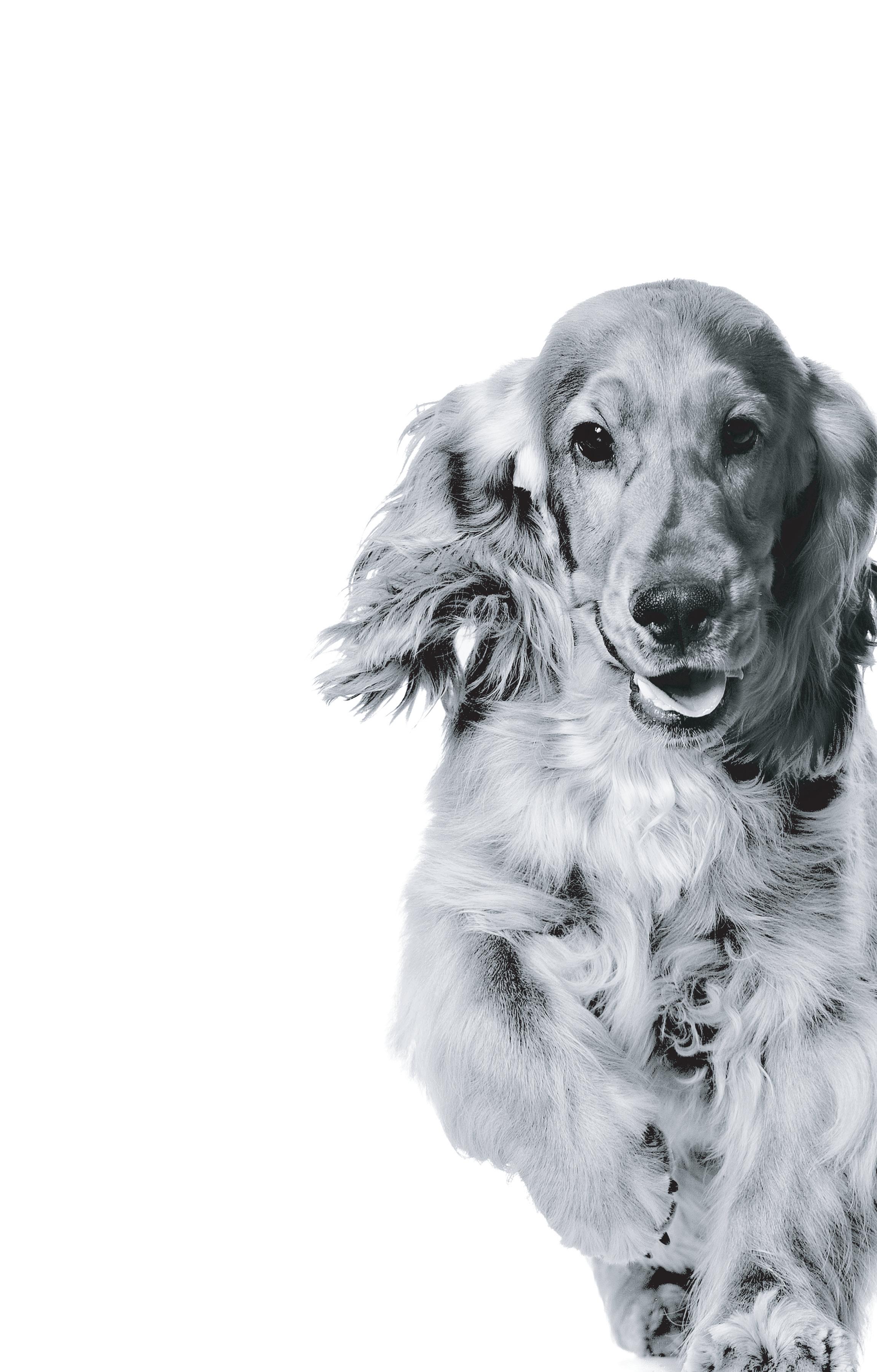
Scan here to discover our online scientific and medical journal library
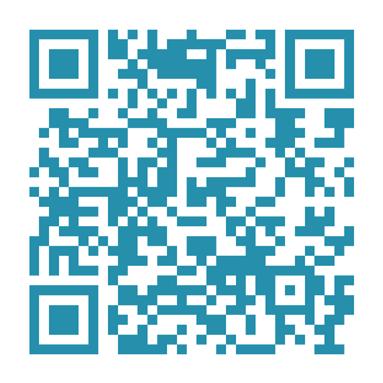
FOR MORE INFORMATION PLEASE CONTACT YOUR ROYAL CANIN ® REPRESENTATIVE
Systemic envenomation patients should be connected to an ECG and monitored continuously until they are stable. ECG monitoring will assist in the early detection of arrhythmias associated with envenomation, electrolyte disturbances and/or antivenom reactions.
Brown snake envenomation is reported to cause cardiac arrest in humans.
Prior to initiating an intravenous fluid resuscitation regimen collect 2-3 mL whole blood and record the following baseline blood values (blood, except coagulation study sample, can be collected from the peripheral catheter):
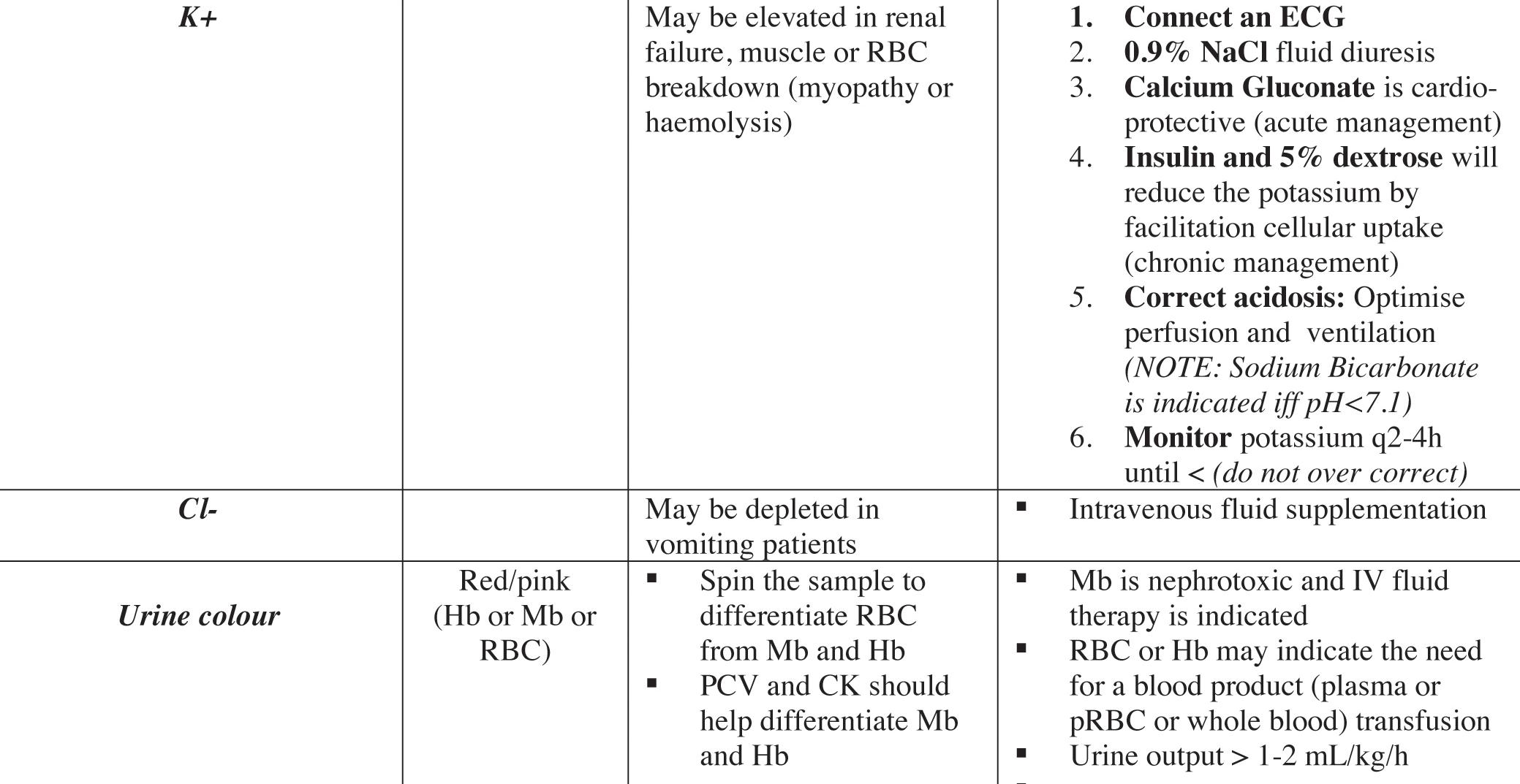
1. Packed cell volume (%) and total protein (g/dL)
2. FRESH blood smear (platelet evaluation)
3. Serum colour
4. Serum glucose (mMol/L)
5.ACT (seconds) or PT/aPTT (seconds)
6. Lactate (mMol/L)
7.Electrolytes (Na+, K+, Cl-)
8. +/- CPK, BUN, Creatinine, blood gas and acid/base values
Collect another 2-3 mL of ‘pre treatment’ blood and store it appropriately for the following tests: CBC (EDTA tube), serum biochemistry (Lithium Heparin or Clot tube), FDP/D-dimer and/or fibrinogen levels.
● Blood may be collected via the peripheral catheter or saphenous vein (avoid using the jugular or cephalic veins for sampling in coagulopathic patients). If possible collect a ‘pre treatment’ urine sample (SVDK, USG, urine colour,dipstick and microscopic evaluation for casts).
● Voided or catheterised samples are preferred (avoid cystocentesis in coagulopathic patients)
● Repeat urine sampling may be required to monitor renal function. In paretic patients it may be beneficial to place a sterile indwelling urinary catheter at this time.
● In acute envenomations a repeat urine sample may be required to positively identify the snake species via a SVDK, iffa false negative is recordedinitially.
The frequency of subsequent testing (blood and urine) is determined by the results of the initial testing and the patient’s progress.
The snake venom detection kit (SVDK)
■ Sampling: The best sample for testing is a swab from the bite site
● Urine is a useful alternative but false negatives can occur (especially within the first 5 hours in cats
● Blood may be used (read directions carefully)
● If a dead snake is available a swab from the fangs may yield an accurate result
The SVKD is 100% specific (a positive result is a positive result) but false negative results can occur as a result of sample timing and testing technique.
Rules of intravenous catheter placement
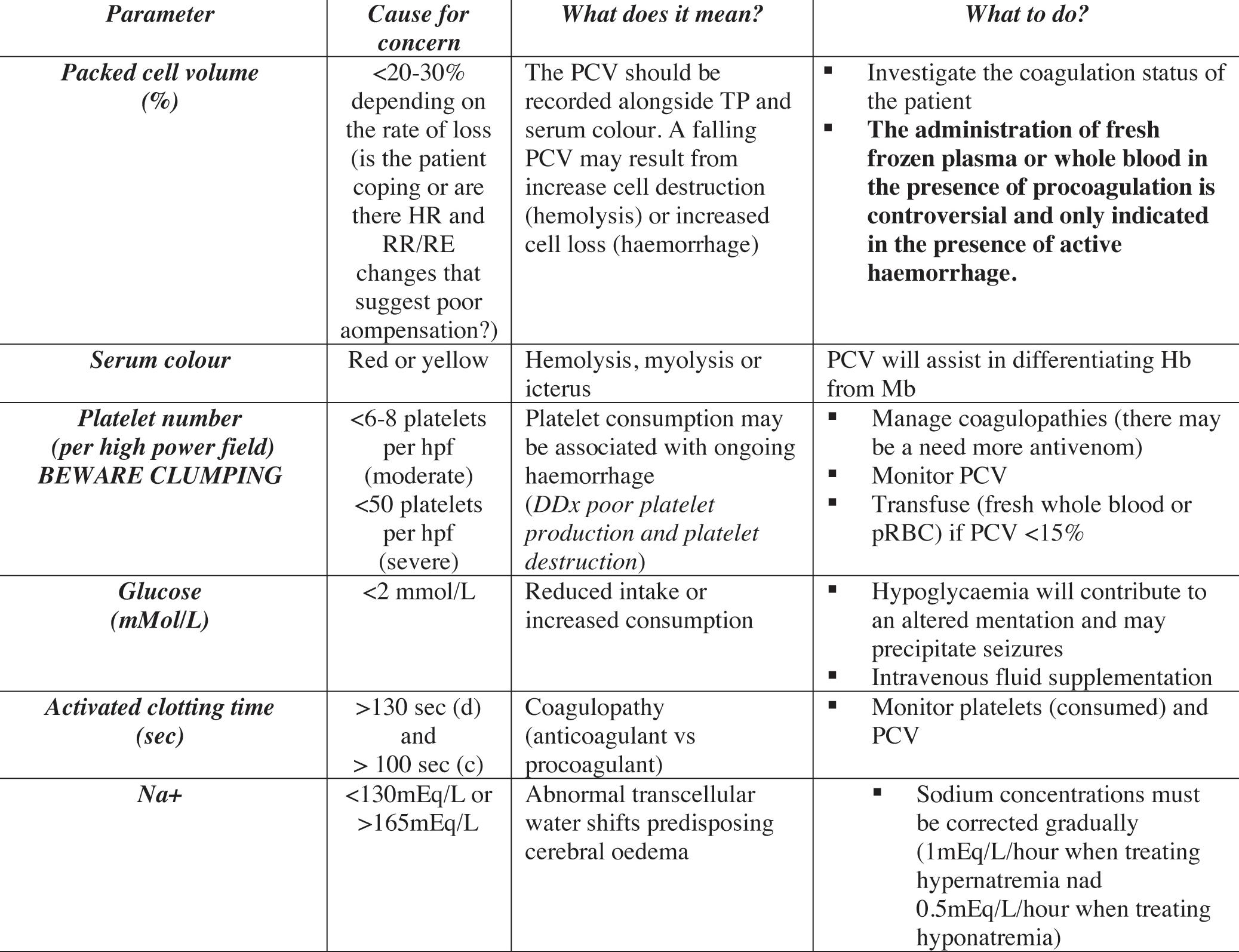
Placement of an intravenous catheter is essential in the management of systemic snake envenomation
■ The following rules apply when placing an intravenous catheter:
1. ‘Threestrikes and you areout’ let another staff member have a go!
2. The vein order for peripheral catheter
placement:
■ cephalic veins ➸ lateral/medial saphenous veins ➸ jugular veins
3. On all veins, start distally and work proximally along the vein
4. A peripheral cut down should only be attempted by an experienced staff member and only if necessary(remember to maintain sterility and bandage appropriately to avoid phlebosis)
3. Fluid resuscitation or rescue phase:
Snake bite patients with acute systemic envenomation may present in circulatory ‘shock’,these patients require volume resuscitation as soon as possible.
Recently, fluid resuscitation techniques have been reviewed as the health of the endothelial glycocalyx can be affected by the rate at which fluid resuscitation is undertaken (i.e. the volume of fluid infused and time over which that infusion is actioned).
The type of crystalloid utilised for fluid resuscitation has also been under review with a trend away from 0.9%NaCl toward Hartmanns.
Fluid resuscitation or rescue:
● Hartmanns: Bolus therapy 10-20ml/kg (dogs) upto 90ml/kg/h and 5-7ml/kg (Cats) upto 60ml/kg/h
Monitor these patient’s q 10-15 minutes and reduce their fluid rate as they start to respond (HR, RR, thoracic auscultation, pulse quality and mentation)
Be careful not to overload them with fluids
Patients that present in circulatory shock have a reduced capacity to perfuse their gastrointestinal tract, lungs, kidneys and brain. Rapid correction of their perfusion status is essential to minimise post treatment complications like renal failure, gastrointestinal ulceration and ARDs
Snake envenomation patients arein the ‘high risk’ categoryfor DIC
Monitoring intravenous fluid resuscitation is similar for all critical patients:
Blood Pressure: Record a baseline blood pressure (mmHg) and resuscitate to a MAP of 80-100 mmHg (do not over resuscitate)
Heart rate/Respiratory rate: Thoracic auscultation q 10-15 minutes during fluid resuscitation will assist in the early detection of a patient’s response and prevent over resuscitation. Resuscitate to a physiologically appropriate heart rate and cease resuscitation if pulmonary‘crackles’ areaudible
Oxygenation: Oxygen supplementation is indicated during resuscitation to maximise delivery to the tissues. Hyper or hypoventilation post envenomation will contribute to tissue hypoxia and acidemia. Supplement to a sPO2 of >95% , in severe cases this may require intubation and ventilation on 100% oxygen.
Pulse rate and character: Pulse character provides a crude evaluation of blood pressure. Areduction in pulse rate accompanied by an improvement in pulse character supports a favourable response to fluid resuscitation.
Packed cell volume/Total protein: Record a baseline PCV and TP, if either or both
Table 1. Canine and feline blood parameters
Clinical Review TheVeterinarian 25 FEBRUARY 2023 ■ www.theveterinarian.com.au
Severe coagulation disturbances, electrolyte abnormalities and muscle damage leading to acute renal failure are likely

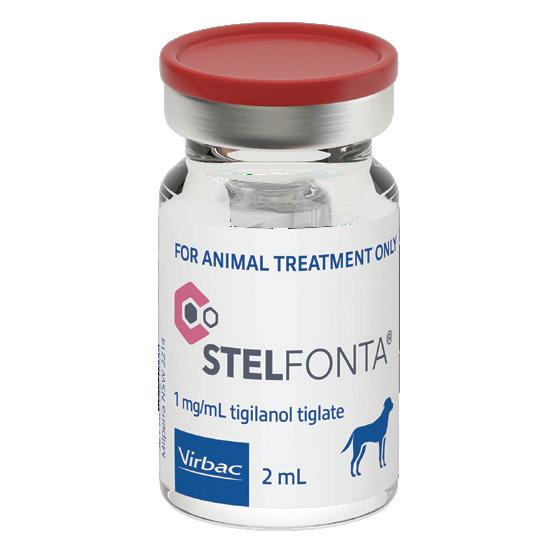
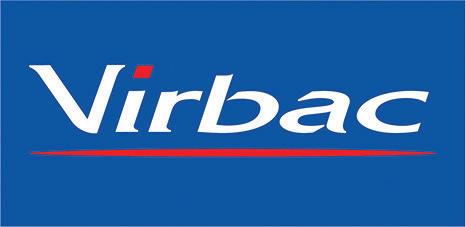
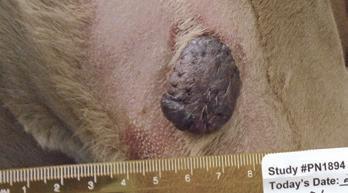
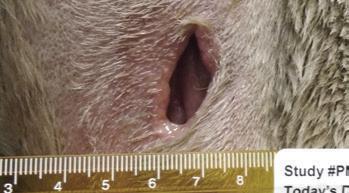
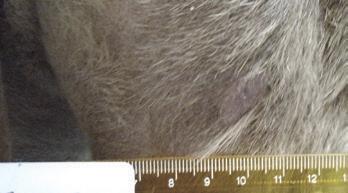
75 75% mast cell tumour removal with a single injection.1,2 Rapid and complete DAY 1 DAY 7 DAY 28
Reference:
1.
APVMA number 88412. 2. De Ridder, T., Campbell, J., Burke‐Schwarz, C., et al. Randomized controlled clinical study evaluating the efficacy and safety of intratumoral treatment of canine mast cell tumors with tigilanol tiglate (EBC-46). J Vet Intern
Med 2021;35(1):415-429
non-surgical treatment for mast cell tumours.
for complete tumour destruction
For more information about STELFONTA® contact stelfonta@virbac.com.au 1800 242 100 vet-au.virbac.com/stelfonta
Dr Jane Miller Veterinarian Victoria
A
One injection
SEEING IS BELIEVING
ofthese are low monitor them q30-60 minutes as they will DROP during fluid resuscitation.
ECG: Continuous ECG monitoring will assist in the early detection of atrial or ventricular arrhythmias.
Lactate (if available): The serum lactate value is valuable indicator of perfusion. Adjunct or alternate to serial BP monitoring may be the implementation of a resuscitation regimen that ceases when the patients serum lactate is < 2.0 mMol/L
Donot over resuscitate snake envenomation patients as they may be renally compromised and may not be able to ‘deal’ with high volumes of intravenous fluids
4. Antivenom: The appropriate antivenom should be administered as soon as signs of enveno-mation are observed. Identification is often unreliable and snake venom detection kits (SVDK) should be used but if unavailable use Tiger snake antivenom in Tasmania, tiger and brown snake antivenom in Victoria and poly-valent antivenom in other states.
The amount of antivenom required depends on the amount of venom injected (the size of the snake, the number of strikes, the effectiveness of the strike and the fullness of the venom glands)
Antivenoms are prepared from horse serum (containing no more than 170 mg/mL equine plasma protein)
The risk of anaphylaxis is low (<1% in human literature but increases with prior exposure to horses, equine tetanus vaccines and a general allergic history)
Recent studies suggest more than one ampoule is required to neutralize the procoagulant effects of brown and tiger snakes and we routinely start with two vials in severe envenomations.
Antivenoms should be administered slowly (over 30-60 minutes) diluted in an isotonic intravenous fluid
Premedication: Not routinely used in veterinary patients
Serum sickness: Fever, rash, aching joints, renal impairment and a generalised lymphadenopathy that occurs in 10% people treated with polyvalent antivenoms (up to 14 days post treatment)
Medical management of human envenomations advocates intravenous adrenaline only for life threatening hypotension or anaphylaxis (its use has been associated with cerebral haemorrhage). Human literature suggests adrenaline, antihistamines and corticosteroids be administered only in the event of a clinical reaction
5. Analgesia and sedation
Opioid analgesia is advised
● Buprenorphine 0.01-0.02mg/kg q8h (SC/IV/IM)
● Methadone 0.2-0.3mg/kg q4-6h (SC/IV/IM)
● Fentanyl as a CRI
Snake envenomation can be very painful and we have been using combination CRI therapy to manage pain (i.e. Fentanyl/Lignocaine/ Ketamine) in patients that are clinically uncomfortable
Monitoring the snake envenomation patient post treatment
1. Blood tests: Monitor PCV/TS, Platelets, Serum colour,ACT,Glucose, Electrolytes, CPK, BUN, Creatinine, Acid/base and blood gas status q6-12h
2. ECG: Continuous monitoring is indicated until the patient is stable
3. sPO2: Monitor q2-4 until the patient is weaned off oxygen supplementation
4.BP: Monitor for hypotension q2-4 until the patient is stable
Management of hypotension:
Volume expansion (HTS and/or colloids)
Vasopressors (iff the patient is normovolemic and ECG and BP monitoring is available)
5. Urine output: Monitor q4 until CPK stars to decline (the half life of CPK is 3.5 hours)
6. Urine composition: Dipstick and microscopic evaluation
Anti-venom
The number of units of neutralising capacity and ampoule volume varies between snake species
Administration:
1. Dilute antivenom up to 1 in 10 in an isotonic crystalloid (Saline, Hartmans or Dextrose)
2. Rate: 1vial over 15-30 minutes
3.Have adrenaline on standby in case of areaction
Brown snake venom: Defibrination coagulopathy (pro coagulant effects)
■ Indicators for antivenom treatment: coagulopathy and/or nephrotoxicty
■ There is a risk of cardiotoxicity (collapse, arrhythmias and cardiac arrest)
■ Avoid hypertension (risk of haemorrhage)
■ Platelets are not affected but platelet consumption and thrombocytopaenia have been observed following brown snake envenomation
■ FFP is contraindicated until all circulating venom is neutralised
■ Large amounts of antivenom (Humans: 2-6 vials) may be required to reverse the defibrination coagulopathy (allow 4hours before deciding to administer more antivenom and do not be guided by the PT/aPTT as these parameters may take 12 hours or longer to resolve)
Aretrospective survey published in March 1998 (Australian Veterinary Journal) raises a few issues pertaining to the veterinarymanagement of domestic animal snake envenomation: Few venom detection kits were used prior to the administration of antivenom
Many domestic animals are treated with antivenom on the basis of geographical location and snake distribution
Dogs are more sensitive to venom than cats (lethal dose tiger snake venom 0.1 mg/kg cats and 0.03 mg/kg dogs)✛
The severity of a patients presentation has an impact on the decision to treat
There are a variety of ancillary therapeutics instigated in the management of both cat and dog envenomations
✛ Barr SC. Clinical features therapy and epidemiology of tiger snake bite in dogs and cats. Aust Vet J 1984; 61:208-212
i MA Johnston et al. Successful recuscitation after cardiac arrest following massive brown snake envenomation. MJA Dec 2002; 17:646-649
* Tiger snake antivenom is a cheaper option for these species of black snake
Applicable snake species
Death adder venom: Paralysis (post synaptic neurotoxin)
■ Indications for treatment: Paralysis
■ Paralysis starts with ptosis, spreads to the cranial nerves to peripheral muscles and may cause respiratory paralysis within 6hours if untreated
■ The use of anticholinesterases (eg. Neostigmine) may assist in management of post synaptic paralysis (more Ach available at NMJ may overcome blockade)
Taipan venom:
Paralysis (pre and post synaptic neurotoxin) Myolysis
Defibrination coagulopathy (pro coagulant)
■ Systemic envenomation is common post bite so antivenom is indicated in all Taipan bite patients
■ The paralysis and coagulopathy may be profound
■ Large amounts of antivenom (Humans: 3-8 vials)may be required to reverse the defibrination coagulopathy
Respiratory paralysis may occur within 2-4 hours of bite and complete defibrination within 1 hour of bite
Black snake venom: Myolysis Coagulopathy (anticoagulant)
■ Indicators for antivenom treatment: Myolysis
■ Myolysis predisposes secondary renal failure and hyperkalaemia
■ Anticoagulant coagulopathy (prolonged bleeding time with a normal fibrinogen and no FDPs)
■ Paralysis is of little clinical significance
■ One vial of antivenom is usually sufficient
Tiger snake venom: Paralysis (presynaptic paralysis) Myolysis
Defibrination coagulopathy (pro coagulant effects)
■ Most tiger snake bites result in systemic envenomation
■ The paralysis appears to affect the head (ocular, facial and glossopharyngeal muscles) beforethe respiratory muscles
■ Presynaptic paralysis is NOT reversed by antivenom so early treatment (before onset of major paralysis) is indicated
■ Myolysis predisposes secondaryrenal failure and hyperkalaemia
■ Defibrination coagulopathy may spontaneously resolve (15-18 hours after envenomation)
All species from the Pseudonaja genus: Western brown snake, common brown snake, peninsula brown snake, Ingram’s brown snake, speckled brown snake, dugite.
All species from the Pseudechis genus: Mulga snake, spotted black snake, Collett’ssnake, Butler’ssnake, red-bellied black snake, Papuan black snake.
All species of the Notechis genus: common tiger snake, western tiger snake, peninsula tiger snake, Krefft’s tiger snake, Tasmanian and King Island tiger snake, Chapel Island tiger snake
Some species of black snakes*:Red-bellied black snake, Collett’ssnake, spotted black snake
Some copperheads (Austrelaps species): Lowland copperhead, highland copperhead, pygmy copperhead
Some broad headed snakes (Hoplocephalus species): Stephen’sbanded snake, broad-headed snake, pale-headed snake)
Rough-scaled snake
Maybe of some value in treating sea snake envenomation
All species from the Acanthophis genus: Common death adder, northern death adder, desert death adder
All species from the Oxyuranus genus: Irian Jaya taipan, coastal taipan, inland taipan, Papuan taipan
All Australia’sdangerous snakes
TheVeterinarian 27 FEBRUARY 2023 ■ www.theveterinarian.com.au Clinical Review
Brown snake Black snake Tiger snake Death Adder Taipan Polyvalent Anti-venom
SUBSCRIBENOWTOTHE
No.1
AUSTRALIAN VETERINARY MAGAZINE!
The Veterinarian provides product and industry news, expert columnists, clinical articles, practice management, research updates and nursing information together with lifestyle issues affecting your profession globally.
Send me The Veterinarian magazine by mail everyissue!
Mail POBox 305 Millthorpe NSW 2798

Phone (02) 9487 6627
www.theveterinarian.com.au
One year: $93.50 (incl GST)
Two years: $138.60 (incl GST)
Three years: $182.60 (incl GST)
Overseas rates (all prices Australian dollars)
New Zealand
$105 (AUD) 1 Year
$160 (AUD) 2 Years
$210 (AUD) 3 Years
Rest of the world: $135 (One year)
Name:..........................................................................................................................
Company:...............................................................................................................................................
Address:..................................................................................................................................................
Suburb:..................................................................State:.......................................Postcode:
Telephone:.............................................................Fax:..........................................................................

Email:.........................................................................................................................
Payment of $......................................... by cheque or money order made payable to Sydney Magazine Publishers Pty Ltd

Or please charge my Visa AmexMastercard Card holder’s number:........................................................................................................................... Card holder’s name:...............................................................................................................................
Signature:.......................................................................................Expiry Date:....................................
www.theveterinarian.com.au
CAN CHANGE YOUR DELIVERY POINT AS OFTEN AS YOU LIKE, HOWEVER NO REFUNDS AVAILABLE.
YOU
❏ ❏❏❏ ❏ ❏ ❏ ❏ ❏
Discusses the efficacy of non-pharmacological methods for the treatment of anxiety disorders in dogs.
Introduction
Anxiety-related disorders and the behaviours they cause in domestic dogs (Canis familiaris) are common problems encountered by veterinary practitioners (Butler et al., 2011). Anxiety will often manifest as problem behaviours, such asexcessive vocalisation, destructiveness, and inappropriate urination or defecation, often in their owners’ absence (Konok et al., 2011; Butler etal., 2011). Toimprove the welfare of domestic dogs it is important to address these issues, not only because these behaviours are common reasons for abandonment, relinquishment to shelters or euthanasia, but because it has also been shown that living with anxiety can have anegative impact on the health and lifespan of a domestic dog (Dreschel, 2010; Butler et al., 2011).
Discussion
Pharmacological intervention is a popular remedy for reducing the symptoms of anxietyrelated disorders. However, many dog owners are reluctant to resort to medication due to the risk of unwanted side effects, addiction, and the potential expense of prolonged use (Butler et al., 2011; Kato et al., 2012). An attractive alternative that avoids the use of pharmacology for these owners is the behaviour-modification method of systematic desensitisation. This method stemmed from Pavlov’s early experimental work with classical conditioning in dogs and is now used for the treatment of phobias or fear responses to a particular stimulus in humans (Butler et al., 2011). The treatment involves the gradual and progressive introduction of the phobia-causing stimulus so that eventually the severity of the stimulus that elicited a response before treatment can be reached without generating anxiety (Butler et al., 2011).
Butler et al. (2011) tested the efficacy of adapting this method for the treatment of separation-related problem behaviours in eight dogs, with periods of absence by each dog’sowner acting as the phobia-eliciting stimulus. In the study, the owners were instructed togradually increase the duration of their absence from their dogs in five-minute increments, until eventually they could leave for longer periods without their dogs exhibiting any problem behaviours. Results were determined through the owner’s subjective rating of the behaviours. The study found that systematic desensitisation was successful in reducing both the severity and the frequency of separationrelated problem behaviours for all eight dogs (Butler et al., 2011). Although these results are promising, further studies will need to be done using greater sample sizes to confirm this as a valuable method for the treatment of anxiety disorders in dogs.
Kato et al. (2012) further explored reduction of anxiety-related behaviour in dogs by evaluating the effect of a diet supplemented with alpha-
casozepine and tryptophan. Alpha-casozepine is a natural biological compound found in bovine milk that mimics the effects of gammaaminobutyric acid, a neurotransmitter that has inhibitory effects on anxiety and stress-related disorders (Kato et al., 2012). Tryptophan is an amino acid that is the precursor for serotonin and has been linked to the regulation of behaviour issues such as mood, aggression, and susceptibility to anxiety (Leathwood, 1987; Koopmans et al., 2005; Kato et al., 2012).
The study analysed the effect of the supplemented diet by measuring the dogs’ urine cortisol concentrations as well as their scores on the standardised Canine Behavioural Assessment and Research Questionnaire (C-BARQ), which is designed to assess the prevalence and severity of behaviour problems in dogs as reported by their owners (Kato et al., 2012). The concentration of urinary cortisol is a known physiological marker of stress or anxiety in animals, and is a common non-invasive method for quantifying stress responses (Beerda et al., 1998; Kato et al., 2012). Kato et al. (2012) compared urine cortisol concentrations as well as the prevalence of problem behaviours for 28 dogs in a single-blind crossover trial after eight weeks on both the control diet of no supplements and the study diet with alpha-casozepine and tryptophan supplements. Urine was collected and compared from a post-stressor environment (2 hours after avisit to a veterinaryhospital to have their toenails clipped) and pre-stressor (in the home environment). The study found that the supplemented diet was effective in reducing anxietyrelated behaviour (Kato et al., 2012). The use of a supplemented diet would also be a practical and valuable method when used in combination with behaviour modification.
The initial trigger for anxiety-related behaviours in most dogs is unknown, although traumatising separation events areoften thought to contribute (Butler et al., 2011). A key traumatising event could be the early removal of young puppies from their litter and dam. As seen in astudy done by Pierantoni et al. (2011), early separation can result in behaviour problems later in life. Owner-reported problem behaviours weresignificantly higher in a group of 70 adult dogs that had been separated from their litter between the ages of 30 to 40 days when compared to another group of 70 adult dogs that had been separated from their litter at the age of 60 days.
The correlation between early separation and behaviour problems is likely due to the fact that the puppies are being removed from their litters during their key socialisation period, a time during which social and environmental behaviour patterns are established (Pierantoni et al., 2011). Pierantoni et al. (2011) found that the negative experience of removing puppies from their litters prematurely can result in long-lasting behavioural changes and provide a basis for many adult behaviour problems.
Conclusions
Behaviour problems in domestic dogs greatly increase their risk of abandonment, relinquish-
ment to a shelter, or euthanasia (Pierantoni et al., 2011; Butler et al., 2011). Therefore, treatment to prevent or reduce the prevalence of these behaviours will improve the welfare of these dogs. The behaviour-modification method of systematic desensitisation was effective for the treatment of problem behaviours in dogs with anxiety disorders by Butler et al. (2011). Kato et al. (2012) also found that the dietary supplements alpha-casozepine and tryptophan were effective in reducing problem behaviours inanxious dogs. However, Pierantoni et al. (2011) noted that if a puppy is allowed to stay with its litter and dam until at least eight weeks of age, then problem behaviours are less likely to develop.
■ LEAH SLATER
References
Beerda, B., Schilder, M.B.H., van Hooff, J.A.R.A.M., de Vries, H.W., .Mol, J.A. (1998) Behavioural, saliva cortisol and heart rate responses to different types of stimuli in dogs. Applied Animal Behaviour Science 58:3-4, 365-381.
Butler, R., Sargisson, R.J., Elliffe, D. (2011) The efficacy of systematic desensitization for treating the separation-related problem behaviour of domestic dogs. Applied Animal Behaviour Science 129:2-4, 136-145.
Dreschel, N.A. (2010) The effects of fear and anxiety on health and lifespan in pet dogs. Applied Animal Behaviour Science 125:3-4, 157-162.
Kato, M., Miyaji, K., Ohtani, N., Ohta, M. (2012) Effects of prescription diet on dealing with stressful situations and performance of anxiety-related behaviours in privately owned anxious dogs. Journal of Veterinary Behaviour 7:1, 21-26.
Konok, V., Doka, A., Miklosi, A. (2011) The behaviour of the domestic dog (Canis familiaris) during separation from and reunion with the owner: A questionnaire and an experimental study. Applied Animal Behaviour Science 135:4, 300-308.
Koopmans, S.J., Ruis, M., Dekker, R., Diepan, H., Korte, M., Mroz, Z. (2005) Surplus dietary tryptophan reduces plasma cortisol and noradrenaline concentrations and enhances recovery after social stress in pigs. Physiology &Behaviour 85:4, 469-478.
Leathwood, P.E. (1987) Tryptophan availability and serotonin synthesis. Proceedings of the Nutritional Society 46:1, 143-156.
Pierantoni, L., Albertini, M., Pirrone, F.(2011) Prevalence of owner-reported behaviours in dogs separated from the litter at two different ages. Veterinary Record 169:18, 468.
This essay is one of a number selected for The Veterinarian magazine Prize for Written Communication for Sydney University third-year veterinary science students.
The prevention and treatment of anxiety-related behaviours in dogs: an exploration using non-pharmacological methods
TheVeterinarian 29 FEBRUARY 2023 ■ www.theveterinarian.com.au ESSAY
WSAVA Executive Board Director announced
From page 1
animal veterinary practice in Sri Lanka – Pet Vet Clinic - and is also a co-founder of theSociety of Companion Animal Practitioners of Sri Lanka(SCAP).She is CEO ofthe Blue Paw Trust, an animal welfare charity in Sri Lanka and, in 2018, received the inaugural WSAVA Award for Companion Animal Welfare in recognition of her work to raise standards of veterinary care in the country. She has been appointed to the WSAVA Executive Board for a one-year term under a by-law which states that the Executive Board may appoint an additional Board Member.

Obeyesekere will represent the Asia-Oceania region.
Two of the WSAVA’s Clinical Committees have also appointed new members.
The Therapeutic Guidelines Group(TGG), which works to ensure best practice for the selection and use of veterinary medicines, appointed Fergus Allerton of the UK, Pawel Beczkowski of Hong Kong, Jennifer Granick of the USA, and Ana Martins Mateus of Belgium.
The WSAVA Global Pain Council, which works to raise standards for the management of pain around the world, appointed Adetola Rasheed Ajadi of Nigeria, Conny Mosley of Canada, Nameeta Nadkarni of India and Mike Petty of the USA.
“Dr Obeyesekere’s passion for raising standards of veterinary care and her knowledge and experience ofworking in Asia make her an outstanding addition to our Executive Board, which now includes members from every region of the world,” WSAVA President Ellen van Nierop said. “We welcome her and the new members of the Therapeutics Guidelines Group and Global Pain Council.We also thank them for the contribution they will make to the profession globally during their term.”
Fireworks’ negative impacts confirmed
From page 1 the US, and other events in New Zealand and parts of Europe. They found fireworks used in Spanish festivals impacted on the breeding success of house sparrows; the decline of Brandt’s cormorant colonies in California was associated with July firework displays; and South American sea lions changed their behaviour during their breeding season in Chile because of New Year’s fireworks.
Bateman said fireworks also produced significant pulses of highly pollutant materials contributing significantly to the chemical pollution of soil, water, and air, which also has implications for human as well as animal health. He said the study showed the need for firework bans to be introduced
during sensitive periods of wildlife migration or mating periods to help limit the impact, as well as the adoption of firework alternatives such as reusable drone and laserbased light shows.
“Other than horses, for which there’ssome evidence they can be gradually familiarised with flashes of light, there’s very little that can be done to address the disturbing impact of noise from fireworks on animals and wildlife. There’s growing evidence that community events can be managed in a sustainable way and it’sclear that out-dated firework displays need to be replaced by cleaner options that aren’t harmful to wildlife and the environment,” he said.
■ ANNE LAYTON-BENNETT
Vets’ wellbeing highlighted
From page 3 and greater caseloads given the ‘unprecedented’ levels of pet ownership reached during the height of the pandemic.
“These practical barriers may be especially relevant to professionals working in rural and remote communities serving livestock and the agricultural sector. There is significantly less psychological support and information available to populations living in rural and regional areas of Australia compared to metropolitan areas,” it stated.
Currently Hobart is the only Tasmanian jurisdiction able to offer adedicated after-hours emergency service. Elsewhere in the state on-call options tend to be a shared responsibility between vet clinics to
Agiraffe calf for Taronga
Sydney Magazine Publishers Pty Ltd

ACN 102752787 ISSN 1447-9768
PO Box 305 Millthorpe NSW 2798

Tel: 02 9487 6627
Director - Clem Martin
Email: clem.martin@vetmag.com.au
Editorial Advisory Board
Thomas Donnelly BVSc DipVP
DipACLAM
Nicholas Kannegieter BVSc
DipVetClinStud PhD FACVSc
David Lidbetter BVSc MVS FACVSc
DipECVS Dip ACVS
Angus Martin BVSc
Mary Porter BVSc (Hons) MACVSc
Jeffrey Smith BVSc FACVSc Dip ACVO
David Vella BSc BVSc (Hons) DABVP
Editor - Luke Martin
Tel: 0418 698 228
Email: luke.martin@vetmag.com.au
National Sales Manager James Martin
Tel: 0432 575 877
Frompage 1 weeks, he will spend more time with the other young calves.”
The birth of the calf means the Zoo now has 14 giraffes in the main herd, with another seven in the African Savannah section of the park.
The Zoo’s successful breeding program comes at a time when giraffe numbers have been declining in the wild over the past decade due to habitat encroachment, snares, civil unrest, and poaching.
It is estimated fewerthan 117,000 wild giraffes exist.
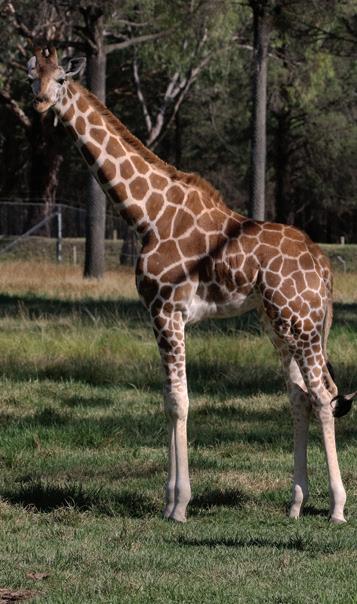 ■ JULIA GARDINER
■ JULIA GARDINER
Canine crisis looms
From page 3 in or influencing the breeding and care of short-nosed dogs,” Bell said. “Wealso hope it will give them useful advice on the steps they can take to help as we work together to resolve a serious welfare issue. All dogs deserve to live healthy lives. We must not let them down.”
The video is available at www.wsava. org/boas.
help share the load and lessen the burden. Dr Allen believes the provision of after-hours care should be mandatory, and a system requiring clinics to share on call duties be established. He said the alternative risks vets being placed in the difficult position of either turning away patients from clinics that no longer offer an after-hours service or making the two-hour journey to Hobart to access the dedicated after-hours practice.
“It’s very hard for us to say, ‘I’m sorry, it’s not our problem’, so there’s a massive amount of stress involved. If we’re doing calls for other vets who no longer do on-calls, the mental stress on vets will be such we may not be able to field a team some nights. If the

patient’s only option is to drive two or more hours to Hobart, then the concern is that the condition of some of those animals needing care may be so critical they won’t make it,” he said.
References
‘A mixed methods investigation of stress and wellbeing factors contributing to burnout and job satisfaction in a specialist small animal hospital’ is available at: www.ncbi.nlm.nih.gov/ pmc/articles/PMC9263834.
‘Barriers to mental health help-seeking in veterinaryprofessionals working in Australia and New Zealand: a preliminary cross-sectional analysis’ is available at: www.frontiersin.org/articlesd.2022. 1051571/full.
■
Email: james.martin@vetmag.com.au
Designer - Anne Norrell
Email: annenorrelldesign@gmail.com
Printed by Newstyle Printing
41 Manchester St, Mile End SA 5031
Post Print Approved PP255003/06488
All material in The Veterinarian is subject to copyright and must not be reproduced wholly or in part without the written permission of the Editor. Views expressed in The Veterinarian are not necessarily those of The Veterinarian orSydney Magazine Publishers
Subscriptions
TheVeterinarian FEBRUARY 2023 30 ■ www.theveterinarian.com.au
TheVeterinarian
Ltd.
Pty
- Clem Martin Tel: 02 9487 6627
SUBSCRIBE NOW! Mail POBox 305 Millthorpe NSW 2798 Phone (02) 9487 6627
Subscriptions Australia
for 1 Year
for 2 Years
for 3 Years New Zealand $105 (AUD) 1 Year
(AUD) 2 Years
(AUD) 3 Years USA/Canada (airmail) $135 UK/Europe (airmail) $135 *All rates arequoted in Australian dollars News
Email: clem.martin@vetmag.com.au
www.theveterinarian.com.au
$93.50
$138.60
$182.60
$160
$210
ANNE LAYTON-BENNETT
Nalinika Obeyesekere
CREATURE Feature
white-bodied
Jack Russell terrier
The Jack Russell terrieris a small dog that has its origins in English fox hunting. It is principally
and smooth, rough or brokencoated and can be any colour.The breed originates from dogs bred and used by the Rev.John Russellin the early 19th century,from whom the breed takes its name.
Available now from your
FIRST-IN-CLASS non-COX inhibiting NSAID
UNIQUE MODE OF ACTION specifically blocks the EP4 receptor, a key mediator of OA pain, but does not interfere with homeostatic mechanisms mediated through other prostanoid receptors
FOR ALL STAGES of OA from the earliest clinical signs
For more information contact Elanco Ph: 1800 995 709 or email: ANZCustomerAdviceLine@elanco.com
INDICATION For the treatment of pain and inflammation associated with osteoarthritis in dogs. Read product leaflet for full instructions. The safety of Galliprant has not been established in dogs less than 3.6 kg or less than 9 months of age.
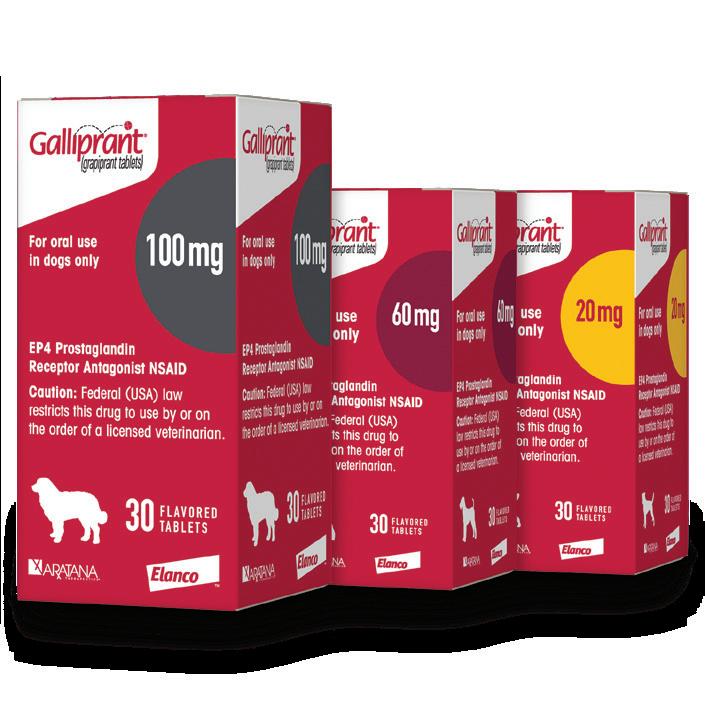
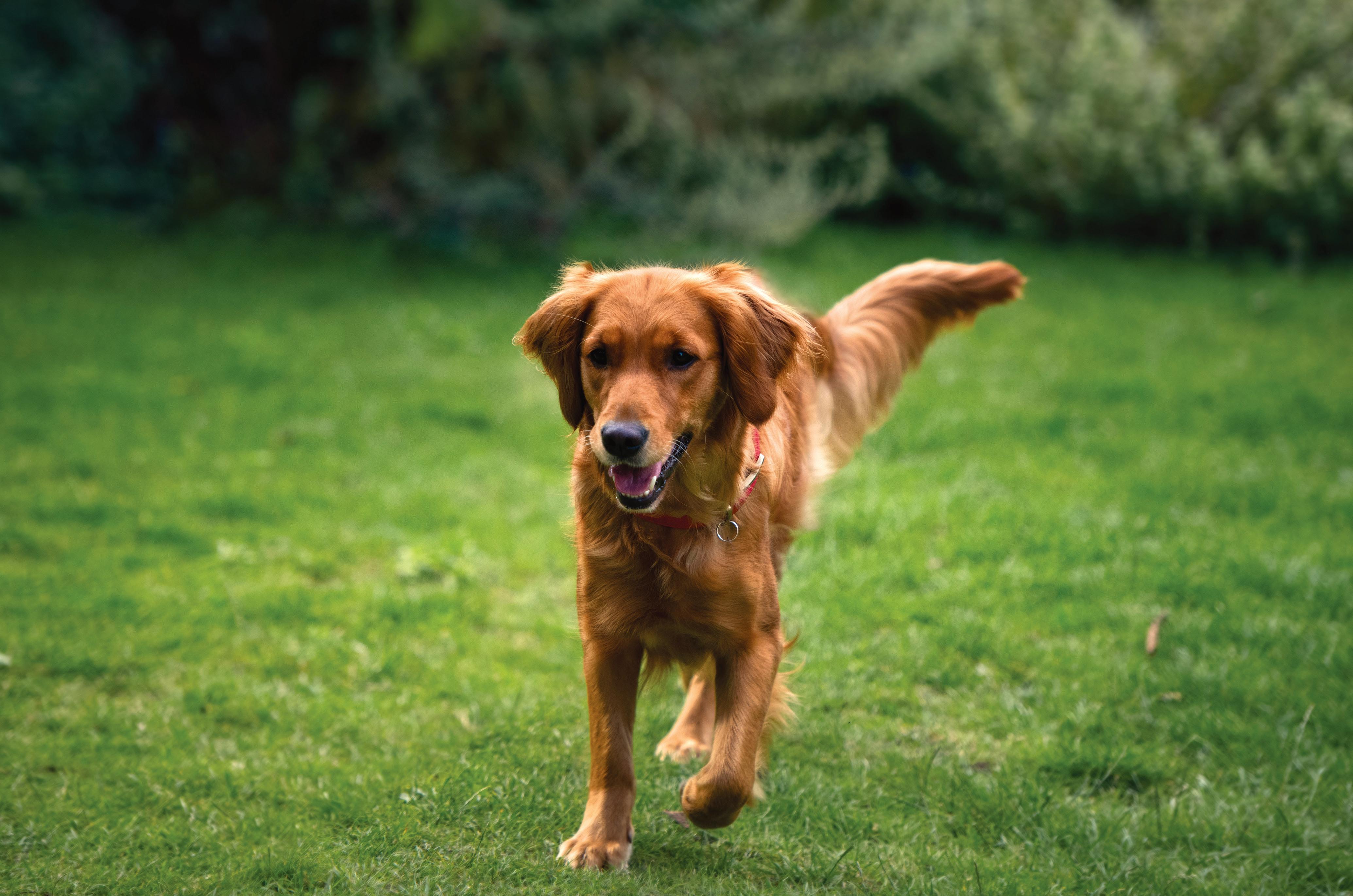
is
Galliprant is a trademark of Elanco or its a liates. ©2021 Elanco or its a liates. PM-AU-21-0160
The next generation in canine osteoarthritis pain relief
here
preferred wholesaler
Galliprant as first-line treatment
Recommend




















































 ■ JULIA GARDINER
■ JULIA GARDINER

